| 発行日時 |
パイプ名 |
見出し |
|
2026-1-4 20:38
|
投稿記事

|
【讀書備忘】43歳頂点...

 探検家かつ書き手として20代から一貫して歩んできたその振り返りが面白い。一回り後の世代ながら、ずっと著作を追ってきたので。 体力のピークと、経験値がほどよく合致したのが43歳と論じる。43という数字は植村直己はじめビッグネームの享年が重なっているから。「死の余白」をもとめて再び出かけ死んでしまう。 我が身を振り返ってみても、人生のある種の頂点はたしかに気がついたら過ぎていた。下りに入ると見える景色の違いでわかる、それも確かだ。平ガ岳のたとえはふさわしいな。そして下り道のほうが尾根が分岐して間違えやすく遭難しやすいのだが。 43歳にこだわるのは、パフォーマンスギリギリを狙う角幡氏クラスならではの切迫感だろう。一般的には生涯をかけての、体力と知力を総動員した最高傑作を意識している人は多くはない。執筆中にK2西壁で45歳で死んだ平出和也の話も。彼にしか到達できない「自分の山」が見えたのだった。 三島由紀夫、植村直己の氏の間際のインタビューなども拾っている。開高健の50代のオーパは、以前から謎だったのだがそういうことですか。荒地を目指す若い頃から土地への一体感に変わる流れとして紹介している。 最終章はたのしそうな50代である。なってみなければわからなかった自分だけの集めてきた経験に裏打ちされた新しい道がある。それは私も同感だ。エキサイティングな探検活動ではなく、土地に根ざした一体感を手繰る山だ。これは人それぞれ違う。 「角ちゃん」の場合は北極圏広域横断と、北海道で犬ぞり狩猟という前人未到の道だ。あるときからは、もう精一杯やったんで、いつどこで死んでもいいやって思うのは僕も同じだ。 きょうはたまたま現役チームが東大雪で疲労凍死寸前のピンチから生還した報告を読んだ。「まだ何者でもない20代」だからこそがむしゃらに登って体験するうらやましい体験だ。積むべきことを積んで、いつか糧になっていくんだ。 風邪の床で読んだはいいが、全然まとまってないので、またかきなおすかも。
|
|
2026-1-4 10:35
|
ヤマレコAACH

|
天塩/馬背山


天塩/馬背山(山滑走/道北・利尻)日程:2026-01-03(日帰り)メンバー: saito1987 zeniya1990 Yanke1987コースタイム:写真:疎林内の滑降あとは長い林道をシコシコと戻るだけもふもふの雪が溜まっていた南西デルタ斜面の滑降開始もどらずの沢林道へ分岐すると正面に馬背山見えてくる南面が雪崩斜面となっている頂上着ポンテシオダムから天塩川右岸の林道を脛〜膝のラッセルで進む感想:うま年のはじめに馬背山を滑る。こいつぁ春から縁起がええわい。
|
|
2026-1-2 6:13
|
ヤマレコAACH

|
西クマネシリ


西クマネシリ(積雪期ピークハント/縦走/大雪山)日程:2025-12-06〜2025-12-07メンバー: shibabemaru onodera22 watanabekaコースタイム:写真:東大雪山系を望む頑張って宿の作製。基部でEP,ハーネスに交換。ピークへ。斜面が急になってくる夏道は荒れていて歩きにくい。西クマネシリ基部の下りはバックステップも交えて慎重に。雪の下は岩も結構出ている。雲が抜けると美しい山々と空。冬のピークに立てるのは嬉しい一段登ってロープを出す。夏道のFixを留めるためのハーケンあり。フライでのテント代用もなかなかいける。早朝から歩き出す。ルーファイ中。過去の記録はここを登っていた様。2本の立木から支点取ってビレイ。看板あった!これから登る岩稜が見えてきた。感想:メインで挑む山々も眺められて胸が高鳴った痛恨のミス
|
|
2026-1-2 6:11
|
ヤマレコAACH

|
八剣山


八剣山(アルパインクライミング/札幌近郊)日程:2025-12-17(日帰り)メンバー: onodera22 watanabekaコースタイム:写真:最終ピッチ登るALナイフなリッジラテルネストックなし膝ラッセル帰還。かわいい。ありがとう1時間半でやっと取り付きまで。ピー写後半は大分雪が付いてきたこの辺りだけ晴れ夜明けの出発を目指して駐車場に到着。これからお世話になる剣達を眺める。ピークに到着。来し方。感想:先輩に連れて行ってもらった八剣へ、やっと後輩と行けたことが感無量。ひとまず引き継げて一安心。1年目の時から冬になったらあそこに行くんだよと教えられ、定山渓をといるたびに眺めまわし、ようやく。嬉しい
|
|
2025-12-25 0:20
|
投稿記事

|
【讀書備忘】シリアの...

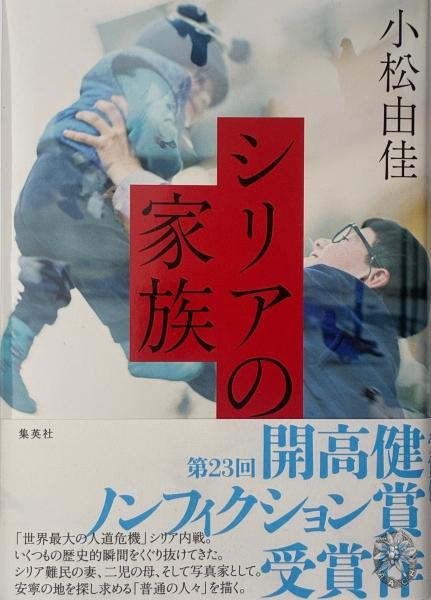 もはや日本初のK2女性登頂者というより、戦国シリアのフォトグラファーという存在になった小松由佳氏。学生時代の登山活動からラクダ遊牧で暮らす大家族ベドウィン族取材に転じて、内戦前の平和だったシリアを知り、ベドウィン家族の一員になり、2012年以降家族は難民生活を13年、昨年12月8日のアサド政権滅亡で難民の夫ともに念願の帰郷をするノンフィクション。 小松さんの人生そのものが充分破天荒ストーリーなのであるけれど未来にどうなるのかは本人含めて誰にも予測できなかった。そして何かを期待して、何かを目指して進んできたというより、20代に関わった、ある魅力ある人々との関係を、とことんやめなかったのだ。やり抜く力を持った人なのだと思う。私は、K2の氷壁も、砂漠のラクダ使いたちとの暮らしも、同じようにそこにともにいる人々の魅力なのだと思う。小松さんを推し動かしてきたのは、周りの魅力ある人々なのだと思った。そして、人生の舵だけは人に渡さず、子供も背負って嵐の波間を進んで来た。 前書2020年「人間の土地」のあと、2022年の圧政下、かつて家族がいたパルミラの、家族の廃墟の写真を撮るために入国。秘密警察に妨害されながらの取材がこの本の山場かと本人も思ったかもしれないが、現実は世界情勢の影響で大きく変わり、その2年後、政権崩壊の10日ほど後に再びパルミラを訪ねた。行方不明の兄が獄死したサイドナヤ刑務所の生々しい廃墟のルポと生存者のインタビュー、旧体制下を生きてきた人と難民帰還者との関係など、1989年東ドイツ、1976年文化大革命終焉、それに1945日本とドイツその占領地にもあった、混乱と希望の混在するカオス。最後まで読ませる、メタファーに満ち巧みなレトリックあり、スジの通った文章だった。しんどい経験だけど、見て伝える人がいてほしい。同時代なんだ。 人は20代でその後の人生に影響の強い人間関係を築き、30代で仕事を一人前に身に着け40代でマスターピースを作る。その後も優れた傑作は生まれ続けるけど、小松由佳43歳、良い人生を歩んでいるな、と思う。二人の息子の未来も楽しみだ。 【以前の書評】 オリーブの丘へ続くシリアの小道で https://aach.ees.0g0.jp/xc/modules/AACHBlog/details.php?bid=745&cid=7人間の土地へ https://aach.ees.0g0.jp/xc/modules/AACHBlog/details.php?bid=779&cid=7
|
|
2025-11-25 7:53
|
ヤマレコAACH

|
オプタテシケ東尾根敗退


オプタテシケ東尾根敗退(積雪期ピークハント/縦走/大雪山)日程:2025-11-22〜2025-11-23メンバー: shibabemaru onodera22 watanabekaコースタイム:写真:視界悪めだけど、とりあえず出発休憩長い長い林道のラッセル女子でも2人用テントに3人はきつい。。。天気待ちをしていると、一気に晴れて嬉しい雪は全てを美しくするようだ10m先真っ白。急斜もこのメンバーならサクサク感想:本当に快適さが素晴らしい。私は感動した。めっチェンの快適さ素晴らしい
|
|
2025-11-25 3:14
|
ヤマレコAACH

|
旭岳西尾根 登頂!


旭岳西尾根 登頂!(積雪期ピークハント/縦走/大雪山)日程:2025-11-15〜2025-11-16メンバー: shibabemaru tamaki_2023 ichikawata00コースタイム:写真:石室ピークより。視界♾️足つってる感想:毎年行ってるのに6年目にして初めて登頂。天気よかった。M早かった。
|
|
2025-11-21 19:36
|
投稿記事

|
重厚長大 正木喜啓君...

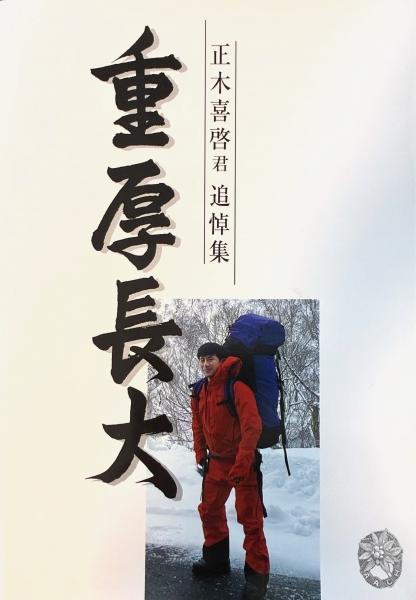 およそ一年前の年末年始、戸隠で遭難死した正木喜啓さんの追悼、山行記録集を読んだ。正木さんの山行人生は「記録帳」と書いた2冊のキャンパスノート(2009−14と2022−24)とその間(2015−2022)のブログ記事に残っていた。 大阪生まれ1986年2005年信州大学士山岳会(山岳部)で単独長期縦走を始め、20代30代で南ア・笊ヶ岳〜北岳〜光岳の馬蹄形縦走、糸魚川〜黒部五郎岳、前穂北尾根〜立山など、冬季黒部横断も繰り返し、3度成功している。 長野県の教員採用試験を受け続け、2019年から高校教員として松本へ。2023年たぶん日本一山に登っている高校山岳部のある大町岳陽高校の山岳部副顧問に。 その同僚で顧問、おなじく大阪から信州の山登りに惹かれて来ている河竹康之氏が、遭難初動捜索連絡に携わり本誌の編集を務めた。 登山愛好家は数あれど、冬季黒部横断や一ヶ月クラスの重厚長大単独冬季縦走を長年にわたり志向する人は、割合としてはほぼいない。何人か名前が浮かぶ人は(和田さん以外は)ほぼ故人だ。生きている間にブログやツイッターで華々しく記録を出す人も多くない。でも、その記録を読めば、生きていようが故人であろうが、同じあこがれを持っていたことがわかる。 正木さんの記録は、携帯ノートに手書きだから簡潔だ。ルートと天候で追い詰められた言葉のほかは、お決まりの朝寝坊と、甘い物をとっておきで食べた話。文面からは読者を意識している様子が見られない。本にして読んでもらおうと書いたわけではなさそうだけれど、希少なる同好の輩にとっては本にしてもらって感謝だ。 正木さんが初めて冬季単独長期縦走をした2007年大学3年目のとき、信大山岳部は部員一人だったという。一人だからこの志向になったというとわけでもなく、やる人は、一人でも何人でもやるものだ。ずっと部員が多い印象の信大でも、一人部員の時期があったのを知った。 20代、30代で自分の志向の山行を苦しみながらも着々と続けてきて、大阪で9年の自宅ぐらしのあと信州の高校教員にようやく採用され赴任した。教え子たちの追悼文からは正木さんが高校教員として充実した暮らしをしていたことがうかがえる。 登山愛好家人生にとって40歳前後は曲がり角だ。若いときは体力はあるが危なっかしい。経験を積むと、多少馬力が落ちても若い者以上の高レベル山行が可能だ。その両方の変わり目がこの年頃に来るのではないか。山に限らず人生も。そして遭難死するのもこの年頃は多いという印象だ。登山そのものと同じく、人生も下り道が危ない。 下山連絡係を受けた河竹氏による、時間軸に沿った遭難捜索事故報告記録が非常にわかりやすく、今どき最新のココヘリと警察連携の、知りたい情報がある。最終下山日まで警察に連絡するのを待った焦燥の気持ちはいかばかりか。自力下山にこだわった本人を知ればこその敬意だと思う。私にも、自力下山しても遭難扱いになった不名誉な経験がある。 正木さんは大町に転居してからは近くの頸城山塊、戸隠山塊に惹かれたようだ。一夜山から戸隠連山へ、最後になったこの計画のラインの美しさに、少し嫉妬を感じた。僕も昨冬は、この戸隠の隣の東山山脈を完全縦走しようと何度かトライした。雪庇と細いヤブ急斜面を遠望して、かなわないと思い引き返した。正木さんのラインはエグくて長いので、今の僕には単独でいく算段が立たない。でも似ている山行計画趣味を感じた。遠いヒマラヤにいくわけでもない、ワンデイでスピード長距離を狙うでもない、重い荷物で低速で、住処のまちの近くの、誰も試みない美しい山脈の全山縦走。 人がなんとみなそうが、正木さんは幸福なときを過ごしていた。雪庇を踏み抜いて落ちるときさえもそうだったと思う。 本人のブログ(2015-2022のみ) https://solomountain.naganoblog.jp/
|
|
2025-10-16 7:19
|
ヤマレコAACH

|
伏見岳〜戸蔦別6の沢〜本流〜北戸蔦別〜伏見岳 ~ツイてないかもー 日高でのんびり丁寧な暮らし~


伏見岳〜戸蔦別6の沢〜本流〜北戸蔦別〜伏見岳 ~ツイてないかもー 日高でのんびり丁寧な暮らし~(沢登り/日高山脈)日程:2025-08-24〜2025-08-30メンバー: shibabemaru watanabekaコースタイム:写真:4杯目に苦しむ一年目クマC3-C4快適テンバピパイロから?ヘビいた🐍カール夏道長〜い六の沢。滝ありすぎてどこのか忘れた出発3回目の伏見岳本流が増水している様C2岩同から焼き芋🍠花火本流に合流この夏2回目の伏見岳北戸蔦別岳。天気悪い
|
|
2025-10-7 1:17
|
ヤマレコAACH

|
地上の星


地上の星(フリークライミング/大雪山)日程:2025-10-04(日帰り)メンバー: Nakagawa2019写真:撮影:Yutaka kirihara撮影:Yutaka kirihara感想:2025シーズン。ひとつのラインに懸けた日々の記録。2023/10/4(Day1)舞台は北海道S峡・流星エリア。竹中さんがinnocent world(5.12c)、中川がMidnight Flight(5.12a)とそれぞれのプロジェクトを完成させた日。来々シーズン北海道に戻ってくることが決まってる自分は、次なるターゲットを探して彷徨う。エリアの中央、一段上の壁に垣間見えるクラックは以前から気になる存在だった。樹林が邪魔でよく見えないのでロープを出して偵察。想定以上にすっきりとした壁に、唯一の弱点として美しい弓状のクラックが走っていた。出だしが汚すぎて下から攻められそうにないこと・最後の数メートルはクラックが途切れていそうなことが懸念点だが、なにか直観めいたものを感じた。スマホで写真を撮ってお気に入りに登録しておく。2024休学して瑞牆・小川山でクライミングライフ。いろんなルートやクライマーとの関りを通じ、クライミングに対する創造力や発想力が養われたように思う。技術やフィジカル的なスキルよりも、こういった部分での学びは非常に大きかった。この夏も北海道に行くというマルボーさんがお店に来たとき、うっかりあのラインのことを口に出してしまう。氏はさすがの行動力でさっそくラッペルで偵察し、上から撮った写真がSNSで流れてきた。やはり鳥肌モノの美しさだった。興奮気味に連絡を取る。「最後数メートルのフェースは難しそうだが奇跡的にホールドはある。出だしの掃除が大変そうだけど登れれば5つ星間違いなし!」とのことだった。年明けは南米コチャモにクライミングに行った。とにかく壁がデカいから記録としては派手になるし、メディアで取り上げられたりもした。知らない世界を経験できた充実感があり、いい経験になったと思う。でもモチベーションという意味ではどうだっただろうか。正直、地球の裏側の縁もゆかりもない壁より、流星エリアのあのラインの方が自分にとっては大きかった。あれは絶対におれが登る。2025/6/23(Day2)出遅れた。ここまで6年間の学生生活を山に全振りしていたツケが回ってきて忙しい春だった。それでも流星Pを念頭に置き、大して好きでもないジムにはなんとか通っていたが、この日がコチャモ以来3か月ぶりの岩登りである。後輩達をうまく丸め込んで月天心に連行。これも素晴らしいルートなのできっと楽しんでもらえたと信じている。登攀後は「こっちからも降りれるんだ」と左のブッシュに突入し、思いのほか複雑な地形に偵察&登り返しを重ねて何とかプロジェクト壁の上に到達。ロープを投げおろし、緊張しながら降りていく。下から見ていると気が付かなかったのだが上部は若干前傾しており、壁のすっきり感も相まってすごい高度感だ。核心と見込まれるフェース部分は思っていたよりピースが散らばっており、切れ切れのクラックからプロテクションも得られそうだった。もっと絶望的なものをイメージしていたのでうれしい誤算だ。なんとなくムーブを探ってみて、どんなトレーニングが必要かだけでも考える。とりあえずカチトレだ!という結論になったが、それが大して的を得ていなかったことを知るのはずいぶん後の話である。7/5-6(Day3&4)単独。公務員就活の天王山的な2週間をなんとかやり過ごして戻ってきた。とりあえず掃除に励む。ラインが斜め過ぎて大変だ。フィックスロープを2本張り、パートごとに分けて作業する。出だしの10mの緩傾斜クラックは土がミチミチに詰まっておりもはや垂直の森状態。不動沢の「トトロ」開拓で、こんなんでも諦めなければ何とかなることを学んでいたので焦らず段階的に掘っていく。労力をかけるだけの価値がこのラインには必ずある。7/12-13(Day5&6)単独。S峡の他エリアに行くクライマーと乗り合わせさせてもらった。1人で札幌から行くのは心身と財布にけっこう負荷がかかるのでありがたい。今回も無心で掃除に励む。さすがにだいぶ仕上がってきた。作業を終えた夕方、改めて見上げる壁の美しさを誇らしく思う。こうやって時間と労力をかけてルートを形にしていく過程はとても充実しており、自分が一番好きな時間である。8/13-14(Day7&8)今年も黒船御一行がやって来た。せっかく2本フィックスを張ってあるのでマルボーさんに手伝ってもらい分担して掃除の仕上げ。同時作業&文明の利器ブロアーの導入(前回まではホウキでやってた)で劇的に効率up。これまでほとんど一人で作業していたので、エリアに誰かがいるというだけで嬉しかった。14日、はじめてリードでトライ。が、比較的易しいのでプロテクションを省いていた下部でスリップしロングフォール。右半身を強打。まともな岩登りが6月以来で身体が硬かったか。手痛いしっぺ返しだ。マルボーさんは核心まで迫っていたが相当厳しそうだった。8/24-25(Day9&10)もう一つのプロジェクトであった就活はひと段落。まだ身体に違和感は残るがマルボーさんがいるうちにと登りに行く。やはり核心は全く勝負にならず、二人とも一手一手進めていくような感じ。セッション効果で何とか輪郭をつかめてきたが、真夏というコンディションの悪さを加味しても、こりゃ相当難しいなという話になった。9/11(Day11)満を持して切り札”kanozyo”を切る。前日までは名寄で楽しく登り込み、月の石やシェマリアなどがスムーズに登れて調子が上向いているのを感じた。この日は桐原さんにも来てもらい、トライの様子を撮影してもらう。相変わらずムーブはこなせなかったが、なんとかいい写真が撮れたのでよしとしよう(ちなみに写真のムーブは完登時のものとは異なる)。9/15(Day12)単独。マーラータワーやらモンベル報告会やらで近くに来たので、パートナーは見つからなかったが一人でワークしに行く。前日はすごい雨だったがピーカン&爆風で一瞬で乾き、季節の進みも相まって明らかにこれまでより岩のコンディションが良い。一気にあと2mのトラバースさえ解決できれば、というところまで進展。今日はポジティブな発見が多くすごく楽しい。足がとにかくシビアなのでシューズの選択も重要だ。メルカリでかき集めたいろんなシューズを片っ端から試していく。その中にパチッとはまる一足があり、それまで踏める気が全くしなかった箇所が、ポジション次第でスタンスとして使えるようになった。これであと1mだ。一旦地面に降りてマットに寝転がり、さっき思いついた体勢に入るためのムーブを逆算。複雑すぎて頭の中では構築できないので紙に書きだす。たどり着いた結論は、マジ?という感じだったがとにかくやってみよう。0から1を生み出す初登という行為においては、ダメと分かるだけでも収穫だ。慌ただしく核心に戻ってムーブを起こしてみる。できた。しかもかなりの再現性を持ってできてしまった。どうして壁に残っていられるのか不思議な体勢だが、最後のピースは自分の常識の少し外側にあったのだ。このルート、登れる。9/23-24(Day13&14)22日から北平さん来道。本当はワイドをいろいろ案内する役目なのだが、正直それどころではない。23日はアテンドを森さんに引き受けてもらい、自分は平井さんと流星へ。前日までの雨で下部がビチョビチョでリードトライはできなかったが、核心だけでもとTrでトライ。Trといえども、ビレイしてもらえることでグリグリをたどる手間がなくなり、核心をつなげて登るシミュレーションがかなりできた。感触はかなり良い。帰るころには壁も乾き、明日で決めるつもりで深追いせず上がる。24日。無理を言って北平さんに半日付き合ってもらった。日が当たる前午前中に勝負をかける。1便目まさかの上部クラックがビチョビチョ。想定外の事態。ここにきて判明したのだが、秋になると晴天の日は昼夜の寒暖差による朝霧が発生することが多く、上部のクラックは霧をトラップしやすい構造なのか濡れてしまうようだ。一応シャツで拭いて降り、2便目はシケリを感じながら核心入り口まで行ったがあえなくフォール。でも、その後も各駅ながら全ムーブをしっかりこなし初めてまともにトップアウトできた。不安要素の一つだった核心真ん中の小さなオフセットカムも墜落に耐えることが実証された。細かな積み重ねだが、着実に進歩している。9/27-28(Day15&16)岩のコンディションさえ整えば登れる感触はある。しかし2週間予報には雪マークの気配が。残された時間は多くない。27日、単独。前回のトライ後、屈曲点のカム用にDMMリボルバー、朝のシケリを吹き飛ばす用のブロアーを買った。出費は痛いがもう止まれない。やれることは全部やる。28日、パートナーはユキエさん。ほぼ初対面の人間の訳の分からないプロジェクトに付き合ってくれる広い心に感謝あるのみ。必殺ブロアーで湿気を吹き飛ばしての一便目、やっぱりぬめってダメ。日が当たる直前11時過ぎに2便目。岩の感触は良い。最大核心のランジで足が抜けて落ちるが最高高度を記録。日が陰った16時過ぎに3便目。それまで2便で体幹がヨレており不安定だったがランジを飛ぶところまで到達し最高高度を更新。いまさらながらトレーニングすべきはカチじゃなくて体幹の持久力だったと理解する。10/2(Day17)平日だがユキエさんが付き合ってくれるというので行く。行くしかない。ムーブがエンドレスに頭の中で再生され、普段思い悩むことなどない自分にしては珍しく寝つきの悪い日々が続いていた。いろんな角度から追い詰められてきている。いまさら意味があるのかわからないが、ここ3日間は意識的に極端な減量を試みた。それくらいしかもう思いつかない。結果、全然パワーが出ずとくに惜しくもないトライになってしまった。大きな筋肉を使うので、しっかり食べないと3日くらいじゃ回復しないみたいだ。本気トライは11時が良いというのが分かったのがこの日の収穫。10/4(Day18)今週末のパートナー濱田さんとS峡へ向かう道中は、シーズンで最も濃いレベルの朝霧に包まれていた。それでいて日中は気温が高いようだったので、こりゃ今日も厳しいなと半分投げやり。現実から逃げるように先の天気予報を見ては、迫りくる冬の気配に頭を抱える。モチベーションのピークが過ぎ、段々弱気になってきているのを否めない。今日こそ決めると意気込んで岩場へ向かう日々に精神が疲れ果ててしまったのだろうか。それまでと変えたことといえば、前日しっかり米を食べたことくらいだ。当日の朝も塩コショウを振ったご飯1合を無理やり詰め込んだ。もしかしたらアスリートがやっているカーボンなんちゃらみたいなやつに偶然うまくハマったのかもしれない。中一日のレストしか挟んでいないとは思えぬほど、とにかく土壇場で力の出る日だった。9時、どうせ濡れているだろうとタオルをぶら下げてアップトライ。シケリは感じるが想定よりかなりマシ。キーホールド群にチョークを叩き込んで降りる。11時、本気トライ。実のところあまり期待していなかったので、気持ちはかなりリラックスしていた。気温の上昇を感じ、途中の穴レストポイントでTシャツを脱ぐ。これで少しはソニートロッターに近づけないかなあなどと考える余裕あり。テンポよくフィンガークラックをこなし、核心手前のレストポイント。傾斜に吸われるので長居はせず、流れるように核心へ入る。頭の中で何百回と繰り返したムーブを、考えるより先に身体がこなしていく。最初は全くできなかったパートも、呼吸を意識しながら突破する。頭より高い位置にフットジャム。右手を握りこんで体幹を意識しながら次のカチへ。スタティックに捉えて微妙すぎる足運びを3つ。まだ呼吸できている。気合を入れてアンダーを引き付け、躊躇わず飛ぶ。体が大きく旋回するがギリギリで止まった。吼える。久しぶりのレストだが、急に降ってきた”完登”というリアルを前になかなか心拍数が下がらない。これは決めるべきトライだ。慌ただしくチョークアップを繰り返し思考を整理する。大丈夫。できるはずだ。こういう局面で決め切る人間であることは自分が一番よくわかっている。自信をもって最後の旅に出よう。トウフックとジャムでカチをいなしトラバース。足をクロスでテンポよく運び小レスト。左手を食い込ませ、右足をハイステップ。肩を意識して渾身の引き付け。右手を遠いカチへデッド。完璧に捉えた。世界から音が消える。無我夢中で残りの数ムーブを起こし、緩傾斜帯へ這い上がる。息は上がりっぱなし。信じられない。現実感を失ったまま、最後の易しいフェースを登り岩頭に腰を下ろす。登れた。登れてしまったんだ。〜〜初登といってもピンクポイントである。それでも自分にとってはすごく大きなクライミングだった。いつかはレッドポイントにトライすると思うが、その前に消化の時間が必要だ。ちょっと離れて休まないと、今はこれ以上のトライは考えられない。グレードに関しては、自己最難であったということ以上はわからないので暫定的である。でもそれは同時に、クライマーとしてとても恵まれた時間を過ごせたことを意味していると思う。これからも、心にプロジェクトを持ち続け、充実した日々を生きていきたい。ルート名は「地上の星」。グレードは5.13aとする。
|
|
2025-9-25 10:35
|
ヤマレコAACH

|
穂高・滝沢大滝〜奥穂高岳〜吊尾根〜上高地


穂高・滝沢大滝〜奥穂高岳〜吊尾根〜上高地(アルパインクライミング/槍・穂高・乗鞍)日程:2025-09-23(日帰り)メンバー: macchan90 Iida_2017コース状況/その他周辺情報:危険な大滝登り。写真:これは登らなかった部分だが、大変面白そうなラインだった。身震いする思いで見上げた。中段オルガンの音が聴こえた、気がする。あっ、毛が無い!感想: 十年ほど前に、一冊の本に掲載されていた写真を目にしたことが本計画立案の始まりだった。柱状節理で構成された特異な形状のその滝は、見る者にただならぬ印象を与える。 滝沢大滝は所謂上高地から北に位置する岳沢小屋の近く、奥穂南稜の取り付き右手にあって多くの目に触れられているにも関わらず、近年登られた話をとんと聞かない滝だった。そんな中、何故かそれが昨秋登られた様で、その内の一人が黒部で会ったことのある人物だというのが如何にも不思議だった。・・・・・まあいい。 この滝を単に登攀するだけではなく、沢登りの一行程として捉えて滝沢を奥穂へ至る登路として考えたい、というのが我々の趣旨だった。 北海道から飛んできてくれた大学山岳部後輩のIida君とは親子ほども離れた歳の差だが、彼が登山に対して高い志の持ち主であることはヤマレコの記録を読むと解る。初対面でもあり、上手く協調できるかの不安も正直あったけれど、結果的に我々は良いコンビになれたし、共に旨い酒を酌み交わすことが叶った。登攀の詳細はIida君に任せるとし、私からは概略を伝えたい。登山大系には?級A1とある。今回、滝には雪渓流水共に無く、ロープは下段で3ピッチ、上段で4ピッチ出し、アブミは使わなかった。チームフリーと言うのだと、後で教わった。9/20;岐阜の釜戸駅で合流し、松本の我らが先輩yoneyama夫妻のお宅で厄介になる。朗らかに呑みつつも、明日からの登山に緊張もして。雨が降ってきた。9/21;松本から白馬村へ向かうも目的の沢は昨夜来の降雨で意外にも濁水を流しており、一度は入渓を考えて林道を歩いたものの早めの判断で転進し、サブプランの穂高は滝沢へ向かった(滝谷、ではない)。バス料金をマケて貰って上高地入りし、サブサブプランのボルダー「岳沢ダイス」の初登(多分)も忘れずに【5級】。見えてきた滝沢大滝は上中下段とあり、下段部分の目処だけは立ったところで戻り、呑んで寝た。9/22;【下段:40m】は、昨夕の2ピッチ分の右手凹角フィックスを伝い登り、柱状節理の好意的"欠け"をスタンスに落口方向へとトラバースして終了。【中段:5m】は記憶にない程に易しい。さて、本命の【上段:60m】へと近づくと、その偉容にちょっと声が出た。私もこれまで随分な数の滝を見てきたけれど、これに似た滝が思い付かない程の特異さで、大聖堂のパイプオルガンのような滝と言えば伝わるものもあろうか。右手にルートを採るのは落ち口部分が大層厳しそうに見えたことから、柱状節理の傾斜・方向も勘案して(傾斜を殺そうと)左手のチムニールンゼ状を登路とし、落ち口を目指した(結果として、右手を登った訳だが)。尚、私のリードピッチは上下段滝それぞれの出だし?で、それ以外はすべてIida君が担ってくれた。Iidaピッチにはどれも厳しい登攀が含まれており、上段???ピッチと登るにつれてその厳しさのグレード、心拍数が上がっていく。私は沢登りの世界でこれまでに有名無名含め何人もの"悪いところに強い"漢たちと登ってきたが、Iida君は26の若さでそんな彼らに遜色ない力量の持ち主だった。胆力、度胸というのが正しいかも知れない。この高度感じる中でプアプロな上にランナウトにも耐え、臆することなく上昇し、ラストの抜け口最終ピッチではビレイするロープを伝ってビリビリと震えるものを感じた。実際にフォローすると、その忍耐強さや思い切りの良さに集中力、大胆不敵さが理解できる痺れるようなダイレクトラインに感動すらした。心で吠えて、小さく吼えたことに共感できた。露出感がマジ半端無く、ラインの美しさも手伝って、後続ながら55でこんな体験はそうざらにできるものではないと感じた。落ちたら一連托生部分を越えてきて、共に喉がカラっカラだと、落ち口で笑い合って煙草を呑んだ。後は涸滝涸沢をグングン登高し、時に這松も掴んで南稜へと合流し、その南稜頭から日本第三位の高峰に立ったのが15時前のこと。Iida君は、二つの五級を登って辿り着いたこの山頂の、最もイカシたラインからの登頂者に違いない。斜光に照る吊尾根を眠気を振り切って歩き通し、幾度目かの下降になる重太郎新道を辿った。 デシマルグレードで表せないあの悪さを含んだ今回のライン、おいそれとは再登を許すまい。悪い、実に悪かった。9/23;抜け殻状態・身体バキバキの我々(私だけ?)は、ヨロヨロと起き出しては茶をシバき、食料を消費し、またヨロヨロと上高地へと下山した。おっと、「岳沢ダイス」再登のムービーを撮ることも忘れずに。面白い、と言って貰えて満足です。沢渡のマル秘沢の偵察をし(!)、更にはツキノワグマとの遭遇のお土産も付けて帰途について拙宅へ。帰宅して身綺麗にして祝杯を挙げた。こんなにも旨い酒を呑んだのは果たしていつ以来のことだろう。夜更けまで呑み、来夏の約束をして固い握手を交わし、手を振った。 熱く、素晴らしい体験をした。
|
|
2025-9-18 1:46
|
ヤマレコAACH

|
黄蓮谷右俣〜甲斐駒ヶ岳


黄蓮谷右俣〜甲斐駒ヶ岳(沢登り/甲斐駒・北岳)日程:2025-09-14〜2025-09-15メンバー: gt2010 hazuki2012rコースタイム:写真:噴水滝奥千丈滝ラバーソール有効坊主滝の捲き千丈滝奥千丈滝右股直後の7mほどの滝坊主滝右岸トラロープ使って捲いた奥千丈滝奥千丈滝入渓後すぐの滝感想:日高の直登沢を思い起こさせる、小気味良い岩盤小滝の連続だった。ゴッシー(2012)と行ったソエマツ南西面が懐かしい。焚き火の匂い、沢の香り、五感の刺激がニューロンを発火する。10年も経てば骨から何まで体の構成元素は全て入れ替わっているというのに。葉巻とウィスキー、アブサンが揃ったら俺たち沢マフィアだなあ。来訪者は妖精ではなくゲジゲジだった。久しぶりに山に行くといつも、そこに身を置くだけで幸せを感じると再認識する。登りは沢登りの楽しさが詰まっていた。下りは夏道のしんどさが詰まっていた。そこそこレベルの筋肉痛が2日続いた。まとめると、とても充実していて楽しい2日間だった。
|
|
2025-9-15 3:07
|
ヤマレコAACH

|
ユウトムラウシ


ユウトムラウシ(沢登り/大雪山)日程:2025-09-12〜2025-09-13メンバー: shibabemaru Mt-sunny tamaki_2023コース状況/その他周辺情報:Day1: 野営場(7:30)Co1280(12:30-14:00)三川台カール=C1(16:30)晴れ。Lの判断で薗部は帯状疱疹で、野営場に待機させた。はじめは野営場から続く右岸の林道を行く。たまに笹濃い箇所あり。まだ林道続いていそうだけど、Co750?くらいの支沢から入渓。長い長い河原歩き。増水はしていないけど、水量は多い。増水したら、渡渉難しくなりそう。途中、Co1040くらいの釜で大休憩。小さいオショロコマは釣れた。Co1280の2段Fはロープ出した。1段目は最初、真ん中ぐらいから登ろうとしたが難しかったので、その右から登った。中間支点は、ハーケン2つ。後続プルージック。Mは空身。その後は小滝をいくつか越えて三川台カールへ。流水が少くなった奥の方をテンバ。枯れ木もそれなり。山下さんは星空の下で、他はテント。DAY2: C1(6:15)トムラウシ(9:00)野営場(14:00)晴れのち曇り。寒いので、ゆっくり準備。ガスっておらず、カール全体がよく見えていたので、計画とは別の南向き斜面の微沢に沿って稜線まで出た。分岐に荷物をデポして、トムラウシピークへ。人多い。分岐で大休憩。夏道の最後、熊らしき影を見たので、笛を吹きまくり、ビビりながら下山。写真:南面の沢型?に沿って登る水槽にオショロコマいっぱいCo1280の2段F下部はずっとこんな感じ最後の滝を超えると、休憩したところ映えてる2段目、右岸から晴れてくれたので、朝焼けも良きようやくカールへ小滝もいくつかありここは天国かゆらゆらダンサーの柴部さん1段目快適テンバ、やっぱり焚火はいい感想:長い河原歩きを超えてからの爽快感が最高な沢だった。紅葉が出始めていたけど、朝さえ我慢すればまだまだ沢は行ける気がする。
|
|
2025-8-18 12:55
|
ヤマレコAACH

|
無名沢コイカク南西面~23南面~コイボク本流


無名沢コイカク南西面~23南面~コイボク本流(沢登り/日高山脈)日程:2025-08-09〜2025-08-15メンバー: Iida_2017 mizushu2016写真:突破3日目、名無沢コイカク南西面、最初の滝、なんもまきまき両方滝の二股、右股を登ってバンドトラバース上から懸垂1回全然問題なし最後の頂へ屈曲点の斜爆左岸を空身で、ザック吊り上げ右岸巻き巻く滝は少ない3日目、23南面下部コイボクカール再びナナシに降り立つピラミッド420の函2日目、カイジ橋5日目、コイボク本流、Co900から滝が続く39が微笑むこれはしっかりめなシャワー燃やせるチャリが欲しい毎日毎日足が痛え滝夏尾根頭にビタ左岸から取り付いて振り返ると39北面、ナナシに始まりナナシに終わる毎日雑炊我等丈夫此にありガレて狭くなる39北面出合コイボクのテンバ23南面出合核心の滝、キャメ極めてる核心の滝、ビレイ点からトラバース後コイボクへ3条の滝(2条)真ん中登れるコイボクはシャワーの沢全然いけなかった忘れた後輩と中札内で後泊その風呂マはルームにいた証だ、宝だ振り返ると23またぐ左岸側壁からトラバって復帰友たれ永く友たれ左岸側壁巻き函左岸からC1、ありがとうプロノトラバって沢に復帰何の顔だよ空身で登ってハーケンでfixビンの底、上からコイボクへの下りその上の滝、そして左股へカチが繋がっている4日目、23南面、最初の2段滝、どっちも左岸ザック吊り上げカネサにて、夏の終わり。右岸をボルダリーに登って越えるホールドがちゃんとあるうまく歩けないが、もうどうでもいい8の沢カールみよしのほぼ終わり23ビンの底C6、希望C2奥二股、ものを乾かすコイカクから見える滝、「滑らなければ大丈夫」下降沢こんな感じの小滝が4つ位続いてはげへ開けてきた無理なやつ、左岸側壁巻き奥に最後の滝8の沢へ水野が泳いで突破イザイザイザ うちつれて アチイ少々藪漕ぎ雪渓はこれだけ進むは今ぞナナシには下から入渓するのが礼儀ですC3、23南面Co820の広い河原足がぶっ壊れるガバカチ豊富PETZLチョックストーンの滝、ショルダーで左側から感想:仕事を早退して車を飛ばしていると、後ろから赤色灯が。あひ。帯広で水野を回収し、元更別の山小屋でC0。Day1:静内ダムゲート(7:15)西川尾根末端の小屋(17:45)=C1晴れ時々雨 林道歩きの日。元浦川林道が昨冬から通行止めの為、道道111号静内ダムゲートからの入山。約6kmを1ピッチにしてひたすら歩く。足も腰も痛く辛い。0.5kmおきに設置されたキロポストだけが楽しみ。不安定な天気なので屋根があるところの方が良いだろうと、2km程余計に奥まで歩いて小屋でC1。アプローチの運動靴がよく燃えた。Day2:C1(5:45)無名沢入渓(6:45)23南面出合(10:45)奥二股(13:30)=C2晴れ ナナシ下部の日。来た林道を少し戻り、作りかけの橋を渡ってコイボク左岸へ。コルから尾根のっこして7年ぶりにナナシに降り立つ。しばらくは河原。Co520の函は右岸空身で一段のっこしてザック吊り上げ。そこからは函と河原が交互に出てくる。この水量ならどこでも泊まれそう。Co700の函は水野が泳いで突破、カナヅチの飯田は紐で引っ張ってもらう。23南面出合に中盤以降の食料をデポ。Co780チョックストーンの滝は前回同様左岸側壁のチムニーを登りザック吊り上げ。あとはスタスタ歩いて奥二股へ。薪が非常に少ないテンバ。夕立がパラリと降ったがすぐに止んだ。Day3:C2(5:45)コイカク夏尾根頭(11:05-11:45)無名沢23南面出合(15:30)=C3晴れ コイカク南西面の日。テンバ出てすぐの滝は右岸を簡単に直登、全然記載するほどでない。次のゴルジュ内の3mFは水圧が強く登れないので左岸側壁を空身で登ってザック吊り上げ。そのままザイル引っ張ってトラバースで沢に復帰、やや悪いが高度感はない。Co930二股の滝も別に。Co980の滝は左岸を一段登ってザイル結ぶ。水野リードで3mの悪いトラバースから左岸直登。水流を右岸に跨いで落ち口のリッジを10mほど登り、その先に3つ連続する函滝をまとめて小さく巻く。ザイルの出しようがなくここが一番悪かった。核心部は3時間位で終わり、以後これと言った難所はなく藪漕ぎ30分で夏尾根頭へ。天気予報を見ると良い日が数日続くようなので、明日は停滞することに決める。しばらくほげほげ。再びナナシへ。藪漕ぎ1時間、特に何もない沢下り2時間でナナシのCo700に降り立つ。熊か人か分からないが滝を巻くたびに草が倒れた跡があった。本流を23南面出合まで戻ってC3。まずは1本。Day4:C3(9:00)・822手前の河原(10:00)=C4晴れ 移動停滞日。ゆっくり起床。函滝が2、3あるが別に。他はただのガレた河原。・822を右に折れて最初の2段滝を見に行き、手前の広い河原でC4。太陽びかびかで暑い暑い。寝まくり食べまくる。さあ明日が勝負。Day5:C4(5:15)1823峰(11:30-12:00)コイボクCo880付近(15:30)=C5晴れ 23何面の日。2段滝はいずれも左岸から。その次すぐ出てくるチョックストーン滝は左岸のゴツゴツした所を直登。次を右岸から巻くと15mF。飯田リードで左岸水流際を空身で登りザイルfixして登り返し。Co940で右に折れる斜爆は右岸から。続く釜持ち滝は左岸から取り付き水流横切って右岸へ抜ける。いずれもフリーで快適に登れる。次かその次の函滝は左岸から巻いた。Co1050「ビンの底」で黙祷。左岸をザイル出して直登。簡単そうに見えたが思ったよりスケールがあったのでザイル出しておいてよかった。クライミング自体は中間も終了点もしっかり取れ、非常に快適。コイカクから見える30m滑滝は滑らなかったので大丈夫。その上にちび雪渓。Co1350から沢はガレてさらに細くなるが水量がそんなに無いので悲壮感はない。チョックストーンの滝は左岸側壁を小さく巻く。次は左岸水流際を直登。その次がシャワークライム。水量多いと大変そうだが無問題。次第に開けてきて、デカい滑滝を左岸からフリーで越えるとお終い。結局ザイルは2回だけ。簡単な小滝とガレを詰め、クマ道に導かれ23へ。しばらく色々なことに思いを。 コイボクへ。稜線を北に1時間弱歩いて1737から沢に降りる。はじめはチョロ川。何もないまま終わるかと思ったらCo1100位でするどい滑滝が現れ、巻き切れず懸垂一発20m。そこから下はガレ沢。疲れた足を引きずりながらコイボク本流を少し上げてC5。へろへろ。(まだコイボクが残っていながら書くのもアレだが、23南面は快調すぎて正直若干拍子抜けだった。昨年の西沢程度にはヤラれるだろうと覚悟していたし、今年は二人とも大した沢に行っていないなど不安はいっぱいあったのに。「スケールの点でナナシの本質は今回降りに採った本流のコイカクシュサツナイ岳南西面直登沢にこそある、と言いたい。勿論本流を下から遡行しての、という意味でだが」(AACHOB松原・乾1998年の記録より引用)とは正にそのとおりだ。)Day6:C5(5:45)カムエク(10:15-10:45)8の沢出合(13:45)=C6晴れ Co900二股を右に入るとすぐにガレたV字状の沢に変わる。Co1000手前の3条の滝は水量少ないため2条しかなく、中央を直登できた。3段滝は1,2段目はそれと気づかないほど簡単。3段目は巻けそうでもあったが定石通りショルダーにした。ジャン勝ち水野が土台となる。V字がだんだんキツくなるとシャワークライムが増えるがどれも気持ちいい程度。函滝もあるが必ずしも泳いで取り付かなければならないようなものはなく、だいたいきわどいへつりから突っ張りに持っていける。15m程の滝を右岸から巻き気味に登ると核心の滝、ここは水野に花を持たせる。右岸の屋根の下から取り付いて強い水圧を受けながら上部で左岸に横断して越える。ザックは左岸から吊り上げ。Co1200を左に入ると4つ程簡単な小滝とそれに続いて20mF。右岸のルンゼからグイグイ巻く。沢に復帰するとどうやら源頭の雰囲気。水量1:1の二股を左に入りコイボクカールへ。憧憬の地、獣の楽園。ガレたルンゼをひいこら登って最後の頂へ。夏道下って8の沢へ。河原を歩いていると後輩の宮下と見城に遭遇。ルームを出てもなんだかんだ山が好きなやつらを見て、なんだかとてもうれしい気持ち。足が痛すぎてうまく歩けなくなってきたので出合のちょい先でC6。Day7:C6(6:45)ゲート(9:00)雨 静かな雨に降られながら、一歩一歩踏みしめるようにして山を降りた。
|
|
2025-8-18 6:08
|
ヤマレコAACH

|
寿都幌別川


寿都幌別川(沢登り/道南)日程:2025-07-03(日帰り)メンバー: Sugiyama_2022 kaneko23 watanabekaコース状況/その他周辺情報:林道分岐(5:00)三の沢出合(7:15)五の沢出合(12:00-15)三の沢出合(14:00)林道分岐(16:00)例会後そのまま始動。林道分岐まで車入れる。2時間ほど仮眠して入渓。暑い。ゴルジュ日和。すぐに函がちょこちょこ。2の沢出合からハーネス履く。2の沢出合から三の沢出合はずっとゴルジュ。圧巻。常に水に入っているので低体温症注意。この間の小滝2箇所流れが微妙なところがあり、ザイル出した。1箇所チョックストーンFはLトップ。3トライ目で抜けた。疲れた。1トライ目は下に引き込む流れに捕まりザイル引っ張ってもらう後続は肩がらみ。もう一箇所ザイル出したところは変な流れはなく必要なかった。3の沢出合でやっと水から出られる。そこからは5の沢出合まではちょこちょこ水から出られる感じ。4の沢出合超えてから、しばらく行くと河原が出てきた。地図読み間違えた気はしないが、下調べでそんなことはないという情報だったので4の沢出合まで戻った。結局間違っていなかった。GPSでも確認。往復1hロス。その後、核心の3段F。2段目まではなんとも。3段目は金子トップでザイル出す。2番目にLがタイブロックで行くが、上部核心の一歩が出せず敗退。確保はされているが落ちたら水流巻き込まれる&下におろしても流れヤバそうな滝壺のため。金子はやはりすごい。左岸ボロ壁沿いに木にFixでザイルはってもらい、タイブロックと時よりゴボウで抜ける。それもむずいので渡邊は登り返しで。なぜかすごく時間かかってた。合計1hくらいかかる。直前の巻きも難しそうだけど2年班レベルではありそう。泥壁というより岩なので、ハーケン取れるかも。さらに手前から巻けばやさしいかも。その後も函は続き5の沢出合まで。来た道戻る。三段Fは左岸の木で懸垂。1の沢の嫌な水流のチョックストーンFは遠くに飛び込む対処。どの滝もcdしてから最後少し飛び込むくらいで下っていく。満足感のもと、林道まで。写真:核心の三段滝。登れそうにみれて上部がムズかった。さすが金子。こういう小滝もちょこちょこ出てくる。結構なシャワークライム。こんなのがひたすら続いて感動。圧巻。水流巻き込まれたところ。ザイルないと怖い。感想:例会後出発は普通に辛かった。けど、睡眠不足を忘れさせてくれるくらい楽しい沢で超おすすめ。
|
|
2025-8-17 11:09
|
ヤマレコAACH

|
檜俣川赤ノ沢西赤沢〜佐武流山


檜俣川赤ノ沢西赤沢〜佐武流山(沢登り/志賀・草津・四阿山・浅間)日程:2025-08-13〜2025-08-15メンバー: macchan90 fujiwara61写真:サブリュー山切明温泉全景BC林道河原の露天風呂で寛いだ。帰途の林道月夜立岩。森下道夫氏なら手掛けているかも知れない。前日の、蜂刺され現場檜俣川の下降点感想: 沢から佐武流山へ。この後、苗場山を乗っ越す計画だったが、同行氏の不調によりサブリューのみとした。
|
|
2025-8-17 8:19
|
ヤマレコAACH

|
三峰山沢右股


三峰山沢右股(沢登り/十勝連峰)日程:2025-08-16(日帰り)メンバー: Mt-sunny tamaki_2023コース状況/その他周辺情報:バーデン前(6:00)富良野岳(11:30-12:00)十勝岳温泉(14:00)快晴。脇道から三峰山沢に降り、左岸の道を進む。地図上3つ目の堤防の先ぐらいまで道が続く。地図上4つ目の堤防を越え、Co1170二股右に入ると、すぐ九重の滝らしき滝が始まる。最初スタンスが乏しく上の立ち木でFixプルージック。最後、悪かったので、ゴボウさせた。その後もしばらく高度感のある登りがあり、緊張。また、滑滝が出てきたので、脇のブッシュから巻いたりもした。この辺が核心だった。華雲ノ滝までも、ピリ辛の小滝がいくつも出てきて楽しませてくれる。華雲ノ滝は巻き道が明瞭で何も。その後、水量がだんだんと少なくなりCo1650くらいではガレになった。Co1510二股を左、Co1560を左、Co1590を左に進んだ。あとは、沢型に沿って進み、藪漕ぎ10分くらいしたら夏道に出た。ピーク行って夏道下山。〈パーティ〉M よく動ける写真:岩が脆そうなので、少し逸れたところにある上の立木からロープ出すナメ第一食堂の豚玉丼夏道華雲ノ滝意外とヌメる圧巻の十勝連峰おそらく九重の滝のはじまり?脇のブッシュ帯から行く感想:人気な沢なだけあって、要素がコンパクトに詰まっている気持ちいい沢だった。ただ少し物足りない感はある。天気は快晴で、まさに沢のThe Dayという感じ。下からでもこれから登る沢型がはっきり見えるので爽やか。来年も来ようかな
|
|
2025-8-17 7:24
|
ヤマレコAACH

|
ニセコアンベツ川


ニセコアンベツ川(沢登り/積丹・ニセコ・羊蹄山)日程:2025-08-06(日帰り)メンバー: Mt-sunny tamaki_2023コース状況/その他周辺情報:昆布温泉(8:30)五色温泉(12:20)曇りのち雨。ホテル甘露の森の裏手の仮橋から入渓。Co370の2段Fは左岸から捲いた。明瞭。1mFは、ホールドが薄く、ボルダーチックで面白い。F2はLは左岸から木を使って、ALは右岸から登った。F3は右岸から、浮石が多く、剥がれそうな岩もあったが、使う岩を選べば問題ない。第一の滝は右岸高捲き。笹や立ち木は豊富。まず踏み跡を詰め、高度を稼いでから右にトラバース。途中、脆くて越えることが難しそうな枯れ沢が出てきたので、上部から回り込んだ。笹帯を繋いで、沢へ復帰。高捲きに合計1hくらい。あとは、意外と長い河原歩き。最後の方は温泉と混ざって生暖かい。トンネルを抜けて五色温泉へ。自転車で快適に車を回収。温泉はALのごっつぁん。写真:F31mF第一の滝F3を上から感想:北海道に来た、卒部した先輩と沢へ。自分が1年目の時には沢に行っていないので、何気に初めて一緒に行った沢でした。沢も温泉もなかなか良かった。1dayの札幌から近い沢に行きたいときにオススメ。
|
|
2025-8-15 2:49
|
ヤマレコAACH

|
余別川エコー沢往復


余別川エコー沢往復(沢登り/積丹・ニセコ・羊蹄山)日程:2025-08-11(日帰り)メンバー: shu2019 yumepporo misa2021コース状況/その他周辺情報:ゲート(6:50)エコー沢(10:40)Co400 7mF上(13:00)エコー沢(14:00)ゲート(17:35)晴れ 余別川河口でC0して遅めの出発。行きは林道を見つけられず、とりあえず1時間笹藪こいで入渓。入渓してしばらく河原。エコー沢までは2箇所くらい泳いだ。エコー沢入っても河原が続き、その後小滝が出てくる。CSの滝は村井と私で足場作って齋藤が突破。一番楽しかったのに寒さで写真撮る余裕なし。Co400 7mF捲いたところで時間切れで引き返す。適宜ab。帰りは作業道や林道を見つけられて快適。写真:晴れてると泳ぐのも気持ち良いミヤマクワガタ感想:今シーズン初の沢で足慣らし
|
|
2025-8-13 11:57
|
ヤマレコAACH

|
札内川キネンベツ沢から札内岳(山スキー沢下降)


札内川キネンベツ沢から札内岳(山スキー沢下降)(沢登り/日高山脈)日程:2025-08-11〜2025-08-13メンバー: saito1987コースタイム:写真:函状続くC2はデブリ跡薪豊富慎重にクライムダウンCo1000付近からは明るい渓相に34年ぶりの頂上函状西の肩から山スキー沢へ下降開始源頭はハイ松の海。直後、またしても羆と遭遇。本日のささやかな釣果連爆帯も出てくる小さく巻いたりへつったりで通過源頭部から十勝ポロシリキネンベツ沢出合C11h程で岩盤の沢Co1450付近の滝上部は左岸ルンゼから小さく捲いて草付帯をトラバースし、滝上へ(20mザイル出す)七ノ沢出合より札内川入渓ポロシリキネンベツ沢の下部は広い河原山スキー沢の下降エサオマントッタベツ川を下る左岸高捲いた滝1300「三俣」は中俣を詰めて南尾根のコル付近へ。カムエク函状に釜滝が断続的に出てくるが苦労はせずエサオマン直登もするがヌメっているのでラバーソールは注意感想: 札内川キネンベツ沢はCo820mを過ぎて沢が北北東を向くあたりから岩盤主体となり、函状地形の中に釜滝が断続的に出てくる。ほぼ水線沿いを突破できるが、1カ所連爆を左岸から高捲く。Co1300の「三俣」は中俣を行き、途中Co1450付近の滝は中段から左岸を小さく捲く(最後草付のトラバースでザイル20m出す)。源頭は獣道を利用しながら南尾根のコル付近へ。軽くハイ松を漕ぎ、34年ぶりの頂上。遠雷を聴きながら支流のカール群を眺める。30余年経ち、難易度や初見どうのこうのではなく、それぞれ個性ある沢に身を置くこと自体が心地よい。 下降はエサオマントッタベツ川(山スキー沢)へ。源頭のハイ松の海で又しても羆のプーさんに遭遇。30m先でピョッコリと頭を出した。ぬいぐるみかと思った。声を上げたらすぐに遁走したが、今回のキムンカムイは愛嬌あって微笑ましい印象。中流部の延々と続くナメ滝はヌメるので慎重に対処。傾斜の立った部分は側壁の草付帯を捲いて降りる。緩い部分は滑り台を楽しむ。ズボンの尻がビリビリと破けた。 沢靴はK川がフェル地下、私はラバーソウルだったが、いずれの沢も(特にキネンベツで)ラバーは滑りやすくて辛い。雪渓はカケラもナシ。
|
|
2025-8-13 5:05
|
ヤマレコAACH

|
小田西川〜狩場山


小田西川〜狩場山(沢登り/道南)日程:2025-08-11〜2025-08-12メンバー: shibabemaru watanabekaコースタイム:写真:感想:お魚いっぱい。
|
|
2025-8-13 4:57
|
ヤマレコAACH

|
十勝北西面〜メナシュンベツ


十勝北西面〜メナシュンベツ(沢登り/日高山脈)日程:2025-08-03(日帰り)メンバー: shibabemaru watanabekaコースタイム:感想:楽しい沢。前回のことがあって怖かったけど良い感じ。
|
|
2025-8-13 4:53
|
ヤマレコAACH

|
幌内府〜余別岳〜積丹岳


幌内府〜余別岳〜積丹岳(沢登り/積丹・ニセコ・羊蹄山)日程:2025-07-26〜2025-07-28メンバー: shibabemaru watanabekaコースタイム:感想:関係各所には本当に申し訳なかった。大反省。みんな無事でよかった。
|
|
2025-5-25 12:43
|
山岳館

|
100周年記念事業への募金のお願い
|
|
2025-5-18 18:36
|
山岳館

|
100周年記念事業用ロゴマーク
|
|
2025-5-5 18:03
|
投稿記事

|
【読書備忘】『チベッ...

 北海道大学山岳部OB、京都大学学士山岳会会員ほか、また南極越冬隊経験者らによる、2015年のチベット西端・アリへの自動車旅行の紀行。ラサから西へ往路はヤルツァンポ川沿いに、西端の拠点都市アリから東への復路はチャンタン高原の南縁をたどり、ラサへ戻るという総行程約3,500kmの往復およそ2週間の旅が記録されている。 メンバーは1960〜70年代に学生生活を送り、ヒマラヤやチベットに強い思い入れを持つ60〜70歳代の世代(2015年当時)。1960〜70年代のチベットは文化大革命で完全に立入禁止で、ヒマラヤは南側だけからだった。チベットは1980年代改革開放以降、外国人旅行者(特に日本登山隊)に対して徐々に開放されてきたが、その後尖閣諸島以降は日中間の冷え込みムードや北京政権の方針(チベット問題)により、再び閉鎖的な空気に包まれるようになった。だが、2015年当時は、制限がありながらもこれほどの広範な旅行が可能だった。変わりゆくチベットの貴重な「西域ルポ」と言える内容だ。 筆者(米山)は1991年と1996年に東チベットのナムチャバルワとチョモラーリ登山で訪れており、当時との比較の視点から本書を読んだ。2000年以降、中国政府はチベットの開発を加速させ、高速鉄道や自動車道路の整備を進めてきた。この結果2015年にはラサから西端のアリまで、自動車で7日間あれば到達できるようになっていた。1日あたり100〜500kmの走行が可能な道路網が整っていたということだ。スヴェン・ヘディンの時代なら半年かかっただろうとある。  また、漢族住民の流入が進み、北京や上海からの観光客が非常に多く訪れるようになっていたという印象とのこと。チベット高原の道路整備について、専門家である住吉氏が詳細に記述している記事が興味深い。 また、19世紀以降の英露日瑞のチベット探検史のダイジェストもよく整理されている。1980年のチョモランマ三国合同登山に参加した貫田氏や、1963年の北大ナラカンカール越境事件に関わった渡辺氏が、それぞれ当時の体験と事情を自ら触れている。 後半には、地質学や雪氷学を専門とする渡辺氏、在田氏によるチベット地質構造の概説が掲載されている。チベット高原がゴンドワナ大陸由来の三つの地質ブロックとその縫合帯によって形成されていること、ポタラ宮は三畳紀の石灰岩層にできたカルスト地形の上に建っていること、インダス川ーヤルツァンポ川の断層には、ユーラシア帯の下に沈み込むテーチス海の海洋プレートが突き進んだことで形成された貫入閃緑岩や花崗岩層が見られること、カイラス山の地質構造など、よくまとめられている。荒涼たる景観の自動車旅行とはいえ、こうした地質的読解力を持った眼があれば風景が意味を持つ。こうした研究者たちが長年取り組んだ研究のフィールドをようやくこの眼で見る旅なのだ。 刊行は旅から10年後の2025年だが、近年では珍しいチベット旅行記だ。ただし、10年のタイムラグがあるため、記述が2015年時点の情報なのか、2025年時点の視点を含んでいるのか判別しづらい点は残念だ。なにしろ、この間の中国およびチベットの変化のスピードは極めて速く、まして自分が知っている1990年代の状況とは、今やまったく異なるはずだ。 2024年のあとがきによれば、この旅行の翌年2016年以降、チベットは外国人に閉ざされたとある。久ぶりにして、当分出てこないであろうチベット旅行記となりそうだ。 いつの日か、チベットを自由に旅行したい。生きている間に叶うかはわからない。 編著:北大山の会チベット調査隊 発行 いりす(同時代社) 2025年2月刊 3500円
|
|
2025-5-3 19:36
|
投稿記事

|
【映画・読書備忘】〈...

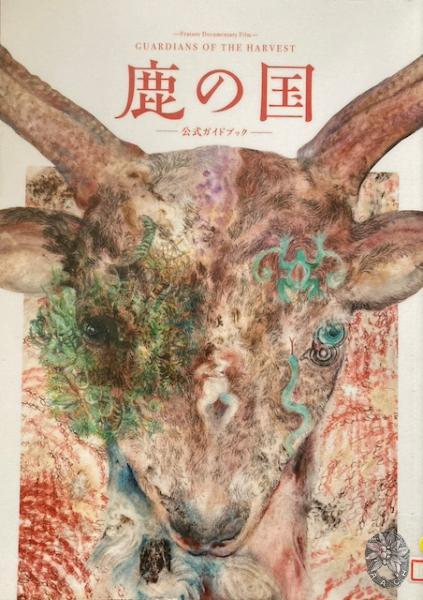 単館上映のドキュメンタリ映画ながら異例のヒットの映画公式ガイド本。映画もいいけどガイドブックもいい。 信州諏訪の信仰世界は諏訪大社以前の縄文時代由来ののミシャグジ神をベースにさまざまな信仰が重なる。映画は諏訪に残るさまざまな神事のドキュメンタリに加えて中世に行われたミシャグジ神事の再現シーンという冒険に出た。その背景、研究者たちの解説、それに1976年以来諏訪の信仰世界に関わってきたビジュアルフォークロアの北川皆雄氏と監督・弘理子氏の寄稿をはじめ、映画の持つ最大の魅力、「謎」の側面を読むことができる。 遠山郷の霜月祭、奥三河の花祭を、かつてオールナイトで取材したことがある。湯釜の周りで、次々と面を付け替えて、もはや今となっては意味を知らない神楽を次々に舞うまつり。同じ天竜川水系の流れを組む系譜ではないかという指摘があり、納得した。今回の中世神事の再現シーンを見て。 カメラマンは北大山の会の毛利立夫会員(1976年入部)。作品中最も私が惹かれたのは山の中を駆ける野生の鹿のギャロップ、長い長い疾走シーンだった。山は鹿だらけとはいえ、あれだけの尺の野生鹿の疾走を撮影するのは困難だと思った。 今年はこの映画を見た影響で、諏訪大社上社本宮から守矢山〜辰野への山越え、それに入笠山から釜無山へのスキーロングアタック、鉢伏山から三峰山〜和田峠〜下社へのスキー山行を連発した。尖石の縄文博物館にも。 諏訪の神さまが気になるの! (概要 寄稿) 中沢新一、藤森照信、夢枕獏、守矢早苗、松井優征、弘理子、北村皆雄、北條勝貴、いとうせいこう、能登麻美子、原摩利彦、大小島真木、中西レモン、吉松章、塩原良、山本ひろ子、宮嶋隆輔の寄稿。鵜飼幸雄、石森三千穂、田中基、北村皆雄による座談会 https://shikanokuni.vfo.co.jp/https://www.amazon.co.jp/dp/B0DTHBL2R6
|
|
2025-4-24 20:56
|
投稿記事

|
【読書備忘】北海道の...

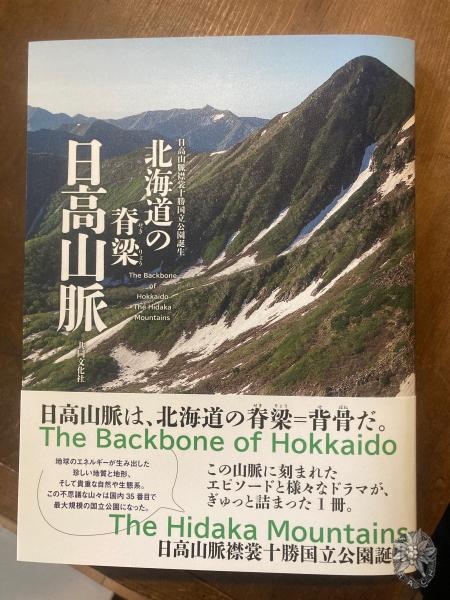 久しぶりの、日高山脈本が出版された。 1970年代〜80年代には日高山脈の航空撮影を含む大型写真集があった。冬期縦走の地形研究のため、大真面目にその写真を毎日見ていた。もとより登山道のない特殊山域だから、参考になる記録としては部室にあった手書きでヨレヨレの山行記録か、活字で読みやすいのは部報だけだった。 久しく経った今も、日高の最深部はまだまだ当時と変わらず無垢であるのが嬉しい。頓挫した日高横断道路計画の経緯も記されている。 実のところ、登山愛好者でさえおいそれとは行けない日高の奥に、多くが求めるようなガイド本はつくれない。今回のように日高を扱う総合的な本が出版されるチャンスなど、ずっと無かったのではないだろうか。 そんな本に寄稿する僥倖をいただいた。 日高の物語として、いつでも読み返したい北大山岳部の黎明期の先人(須藤宣之助、伊藤秀五郎、相川修)たちの紀行文紹介、コイカク沢と十ノ沢の遭難、画家・坂本直行氏の足跡などをグラフィック豊かに辿る。 深い深い日高の、冬と夏の魅力を(小泉章夫、米山悟、松原憲彦)が書いた。美しい写真を沢山提供してくれた若手OBたちの21世紀の超人的冬期長距離縦走山行について、それから今では北大山岳部の得意技に育ったイグルーの生い立ちについても詳しく書いた。 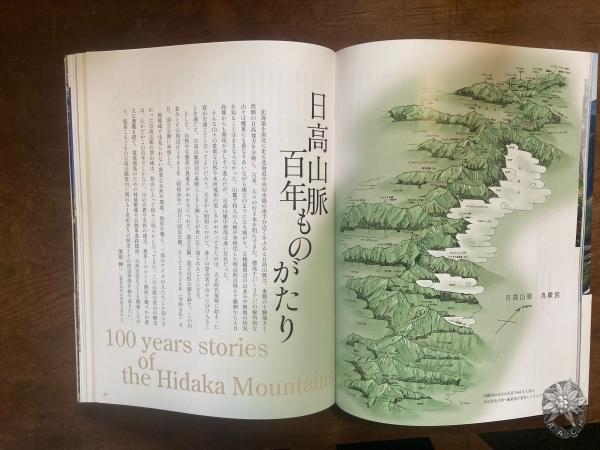 1990年に卒業論文と同時に編集作業に没頭した北大山岳部部報13号の折込特大付録で、日高山脈の鳥瞰図を手描きで描いたものを、今回再掲載していただいた。35年も経って彩色されよみがえった力作を見ていると、一つ一つの線の上を歩いた時間を愛おしく思い出す。 地質、地形、アポイの植物の記事も、写真と図版の豊かな編集だ。南日高の2つの山岳古道についても興味深くまとめられている。「日高山脈と人」をテーマに多面的なテーマを盛り込んだ本だ。 表紙写真と巻頭には、山スキー部OBの伊藤健次さんの撮りたてホヤホヤ写真。雪渓のカールボーデンをトコトコ歩くクマが見えるだろうか。 大きくて、重くなくて、手触りの良い本。 書店のほか、アマゾンでも購入可能になるとのこと。発売日は4月27日。 共同文化社 2025年5月15日 初版 編著者 黒川伸一 2700+税
|
|
2025-4-10 8:58
|
投稿記事

|
出版のお知らせ 【北...

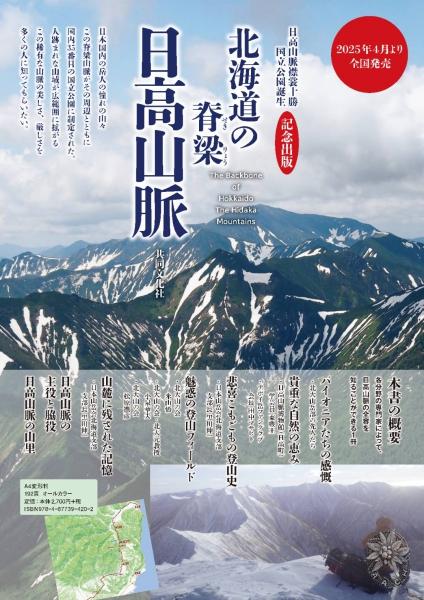 国立公園の制定を機に、この春、日高山脈を巡る山と人の関りに焦点を当てた書籍が出版されます。 内容は5章からなり、写真豊富な構成です。 「先縦者たちの感慨」として山岳部のパイオニア、須藤宣之助、伊藤秀五郎、相川修の紹介。 地形・植物の恵み、日高山脈百年物語として、ルームの登山史が多く触れられます。 また、「魅惑の登山フィールド」として積雪期登山を米山悟会員(1984年入部)が、渓谷登山を小泉章夫(1974年入部)、松原憲彦(1990年入部)会員が執筆します。 更に猿留山道と様似山道という古道、坂本直行氏に関する記事、日高の山々の登山案内と山麓施設の 紹介まで、日高山脈に関する新旧のテーマの記事が盛り込まれています。 近年の若手OBたちの相次ぐ日高全山縦走等の際の美しく厳しい山行写真もふんだんに使わせていただきました。 書店に並びましたら手にとっていただければ幸いです。 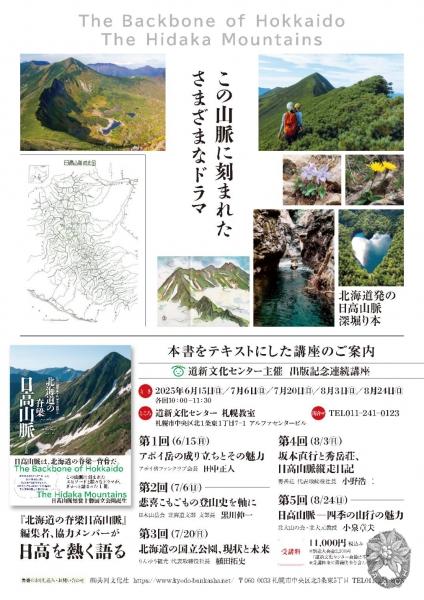 表紙写真:伊藤健次(山スキー部OB) 発売日:2025年4月24日 出版社:共同文化社 2700円(税込2970円)
|
|
2025-2-23 9:50
|
投稿記事

|
関西支部2025年新年宴...

日時:2月8日(土) 13-15時 場所:名古屋駅新幹線口「本まぐろと名古屋飯 花かるた」 参加者:吉田勝(1957)、渡辺興(58)、高橋昭(59)、渡辺尚(59)、伏見(61)、須田(62)、名越(63)夫妻、岸本(65)、江島(79)、太田(80)、岡島(83) 近畿東海は小春日和が続いていたのに当日は冬本番、関ヶ原は本格的な降雪で私は新大阪からではなく、急遽難波から奈良を突っ切り近鉄で名古屋に向かうも伊勢湾側も雪。それでも参加者はお一人を除き何とか定刻に集まりビールで乾杯。 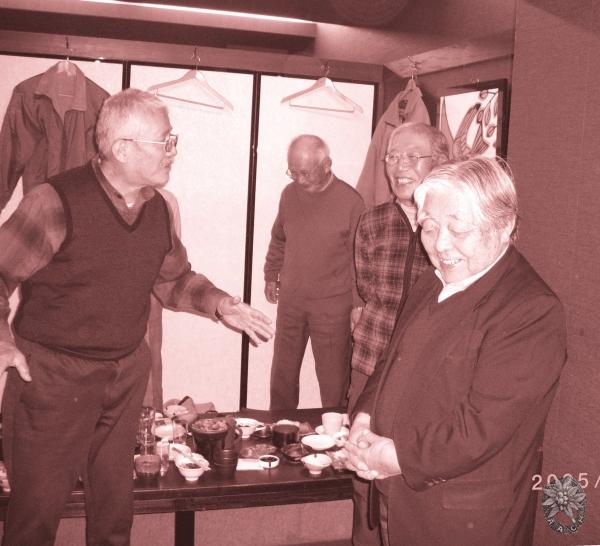 今回は東京から渡辺会長が、100周年記念事業の実行委員長として”お仕事の話”をするために参加された。100周年記念の通史について、 1)人物譚のうち関西支部関連の執筆、2)関西支部の支部史の執筆 をそれぞれ依頼された。また事業全般の内容、進捗具合、寄付集めなどを話していただき有意義でした。私(1965)より年下の会員は渡辺会長が関西支部で活動の頃のことは全く知りませんが、第三者的にこの会を眺めていると1970-80年代の支部の集まりの雰囲気が分かるような気がしました。
|
|
2025-2-5 11:20
|
投稿記事

|
第97回ヘルヴェチア祭...

 書き込み遅くなったが、11/9〜10ヘルヴェチア祭り開催。 現役9名、OB6名の参加あり(右端は躯体調査の宮島ゲスト)。 以前は10月末だったが雪崩講習会が重なったり、最近の少雪傾向で冬山の準備山行もまだなのでこの時期となった。  初日は積雪のため道道入口の除雪からスタート。 気温は上がり作業にはちょうど良い日和。暗くなっても 煙突掃除等に励んだ後、夜の食事は現役女子が主導し、 予算オーバーながら食通OBもうならせる山の居酒屋的 贅沢メニューで好評だった。 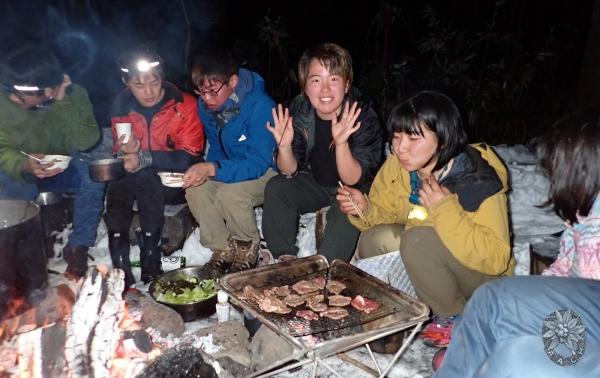 焚火を囲んだ懇談の中では、豊富な経験あるOBの話が 現役の胸に響いたよう。  現役からは「春合宿やその前にOBによる1年目のスキー指導が あると良い、氷や冬壁の登攀についてOBの指導を得たい、 小人数で2つの小屋管理は負担」等の声があった。  開催の2週前に無意根尻小屋が焼失してしまったことを受けて、 特に煙突まわりは重点的に掃除および外部突出部の補強。 昨年も煙突掃除は実施していたがかなり煤がたまっていたため、 やはり毎年の掃除が必要。 祭り当日は玄関ドア隙間埋め、不用品撤去、防腐剤塗布、掃除、 ワックスがけして最後に集合して部歌[山の四季」を合唱。
|
|
2025-1-30 20:06
|
投稿記事

|
【読書備忘】未踏峰と...

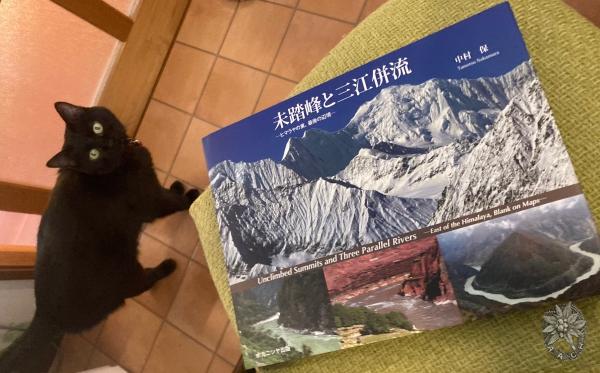 著者・中村保氏は1934年生まれ。一橋大山岳部で1960年代にペルー、ボリビアアンデスで初登攀など実績を残したあと、1990年からは秘境、横断山脈の研究を続け、著書を連発してきたことで知られる。「ヒマラヤの東」「深い浸食の国」「チベットのアルプス」など。この地域の地理に関して世界で最も詳しい人ではないだろうか。若い頃は先端クライマーで、サラリーマンも勤め上げ、晩年からこの横断山脈未踏山域の研究踏査と、言う事無しの人生だと思う。 ナカニシヤ出版 2021年 8800円 226p アルパインクライマーよ、世界最後の辺境にはこれだけの未踏峰が未だあるのだよ!と呼びかけているようだ。 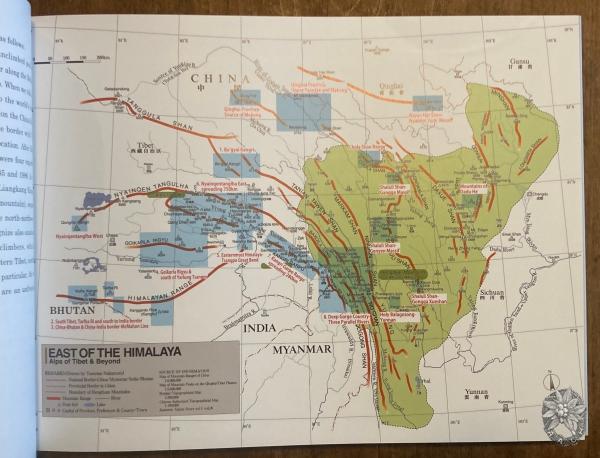 交通インフラ的にも、国情的にも近づくだけで一苦労の山域のため、「クライミングに専念したい人」には高嶺の花というか、むしろ「面倒くさい地域」ではあるが、その反面、情報過疎、記録無しの未踏ルート、未踏山頂ににあふれている。これぞ探検魂を発火させるエリアなのだ。でも、鋭鋒ばかりでテクニカルにはヤバそうだ。だからクライミングに専念している人にこそ登ってほしい山ばかりなのだ。青い四角形の部分の詳細地図が掲載されている。  巻頭にある著者作の表では、6000m台の未踏峰は概算375峰で、5000mに目を向ければ無尽蔵とのこと。本は日本語英語の併記。英語読者にも向けられている。 空撮を含む写真はもちろん素晴らしいが、地形図が豊富だ。中国領がほとんどなので尾根型と谷記号のみで等高線まではないが、苦労して集めたものなのだろう。見ているだけでうっとりする。色鉛筆で模写して憶えたくなる図だ。 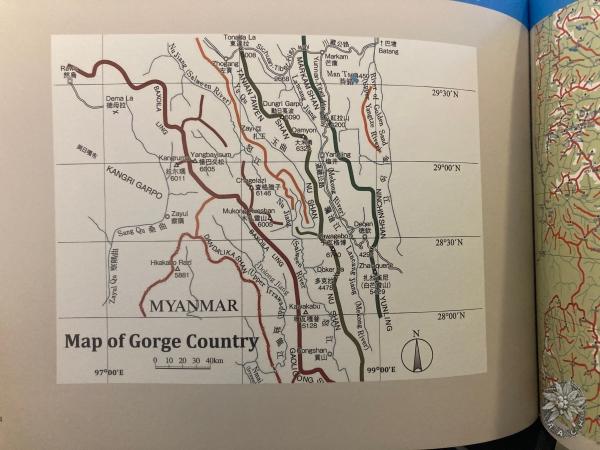 「三川山域」の紹介を私なりに概説すると、横断山脈とは、東から大河が南北に三本流れている。 ●揚子江(長江)上流部名・金沙江(チンシャジャン)→東シナ海(上海)へ ●メコン川 上流部名・瀾滄江(ランツァンジャン)→南シナ海(ベトナム)へ ●サルウィン川 上流部名・怒江(ヌジャン)→インド洋(ミャンマー)へ +更に1本の ●イラワジ(エーヤワディー)川支流の独龍江(ダロンジャン)→インド洋(ミャンマー)へ にギュギュッと圧縮され挟まれた山脈が東からタテに合計4本。地球上で最もしわくちゃな地域だ。 7000m峰の貢嗄山(ミニャコンカ)、6000m峰の梅里雪山(メイリシュエシャン・カワカブ)は日本隊も関わり知られているけれど、その他にもこんなにたくさん未踏の山頂もルートもある。 横断山脈に加えて、ヤルツァンポ川→ブラマプトラ川→ベンガル湾の大屈曲部周辺の山々の紹介もある。ここは7000m峰のナムチャバルワとギャラペリだけは日本隊にも縁があり知られているが、その他の山々、それにブータンヒマラヤのガンケルプンズムと周辺、チベット高原のニェンチェンタングラ山脈と、かなり広範囲が対象。 改革開放の80年代後半から90年代半ばにかけ、日中登山界は親しかった。私はNHKの番組取材で1991年ナムチャバルワ、1996年チョモラーリの登山隊に加わった。この時期は日本山岳会、ヒマラヤ協会を始め多くの登山隊がチベット未踏峰に向かったが、90年代終わりくらいからは尖閣諸島問題やチベット問題などもあり、また、日本の海外登山層の変化もあり、このエリアへの関心はそれ以来ずっと高まらないままの印象だ。 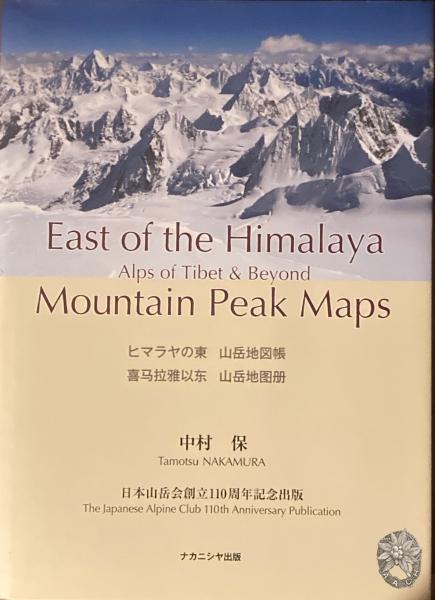 中村氏の集大成は ヒマラヤの東 山岳地図帳 日本山岳会創立110周年記念出版 日英中国語ナカニシヤ出版 2016年刊 10000円 今回はそのよりぬきで写真セレクト版というかんじだろうか。前作は地図が主体で日中英3ヶ国語で文章豊富。今回の本は、文章は少なめで写真が大判。6000m未踏峰の一覧が特徴的。 日中英語の表記で、中国語音のアルファベット表記は少しクセがあり素直に読むと違う音の字がある。しかもチベット語に漢字を当てたその漢字音韻をアルファベット表記したものなので、かなりひっくり返っていて、とてもカタカナに表記する勇気がない。中国語(北京語)のカタカナ表記は、対応する日本語カナが無くていつも苦労する。と思えば有名峰や大きな山脈名以外の、個々の山頂名などは漢字化されず、チベット音そのままアルファベット表記も多い。漢族がまだ表記していないということかもしれない。 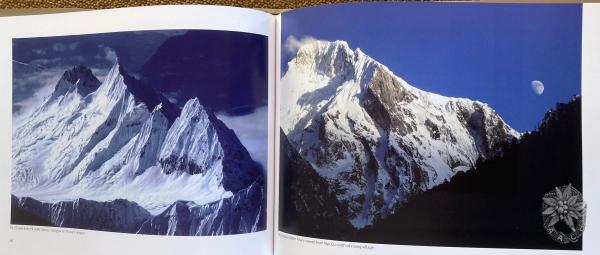 東チベット、念青唐古拉山東部(北東部) p80 Pk5630m峰とPk5640m峰 Gonrpu Gl.Y'iong Tsangpo p81 Hayungarpo6388m 北面 Nye Qu north of Y'iong village 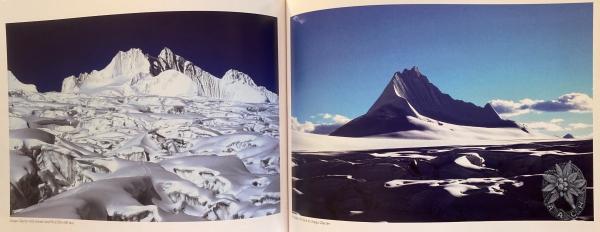 東南チベット、カンリガルポ山群 280km東部 p112 Pk6350m峰北東面 Lhagu氷河中流より p113 Pk5480m峰北面 Lhagu氷河中流より 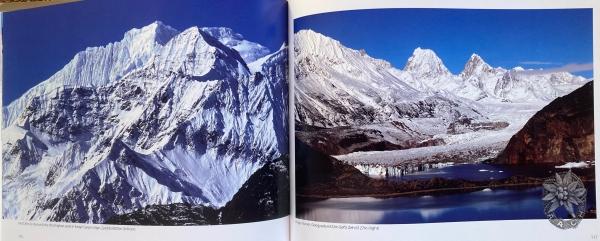 東南チベット、カンリガルポ山群 280km東部 p116 Pk6726m峰 カンリガルポ山脈の第三高峰(後ろ)、Zyaddo峰6025m(手前) p117 Lhagu氷河、Gongyada 6432m(左)、Zeh 6127m(右)  深い浸食の国Geuzong山塊(Dungri Garpo,Damyon) p134 DungriGarpo6090m(左)、PK6070m峰(右) Markamの西から見た北東面 p135 DungriGarpo6090m北東面 Yu Qu盆地 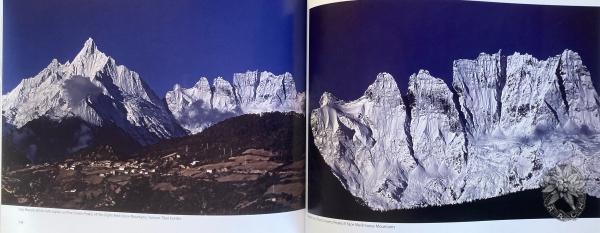 深い浸食の国ー梅里雪山山群 p144 Holy Mianzim6054m(左)Jiajiren-an(Five Crown Peaks)5470m(右)梅里雪山 雲南西藏境 p145 Jiajiren-an(Five Crown Peaks)5470m 東面 梅里雪山
|
|
2024-12-30 9:07
|
山岳館

|
山岳館の場所
|
|
2024-12-26 1:23
|
投稿記事

|
関西支部一杯のつもり...

報告が遅くなり申し訳ありませんが、2024年12月7日に博多駅前の居酒屋「金木犀」にて、「関西支部一杯のつもり会(博多バージョン)」を催しました。 参加者:加納(1965、山口)、岸本(1965、兵庫)、平岡(1974、福岡)、清水収(1979、宮崎)、岡島(1983、奈良)、小田島(2014、熊本)、神谷(2015、福岡)、井上(2017、福岡) 報告:神谷 普段交流の少ない九州在住の会員と親睦を深めることを目的に企画されたこの会。当日は奈良から宮崎まで、八名が博多に参集しました。  店に着き、乾杯を済ませ、先ずは年齢順に自己紹介と近況報告。 若手は元気に九州の山を満喫中です。 岸本さん岡島さんからは関西支部の状況と山岳部100周年に向けての動きについてご紹介。 若手会員不足を嘆いておられました。 はじめましての人が多く、会が盛り上がるかを心配していましたが、お酒が入ってしまえばこっちのもので、最近の山岳部の動向や若手OBの山行の話等で大いに盛り上がりました。 料理はというと、明太子・からし蓮根・さつま揚げの前菜から始まり、ゴマ鯖、イカの活造り、地鶏の炭火焼、天麩羅にかしわ飯もついて九州の幸を満喫できる大満足のメニューでした。 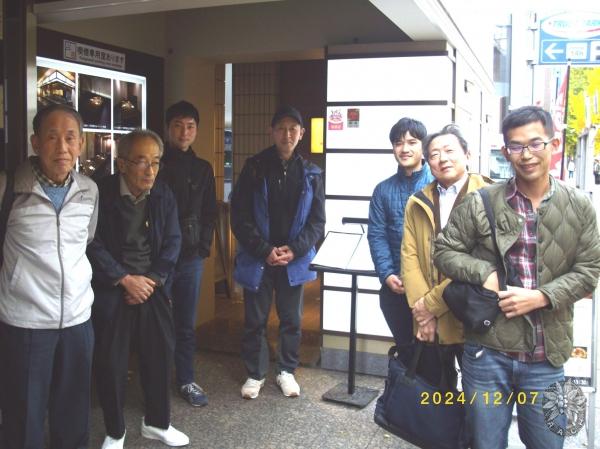 楽しい時間はあっという間に過ぎていき、最後は店前で集合写真を撮影。またの再会を誓って解散しました。 最後に若者へは100周年に向けて収集中の写真のレタッチや、AACHブログへの投稿等の宿題を課されました。 P.S 解散後神谷、井上、小田島の三名は佐賀に住む探検部OBと合流して博多駅で二次会。その後井上の住む九州大学井尻寮の庭で焚火を囲みながら三次会を行い、アルコールまみれの土曜日となりました。 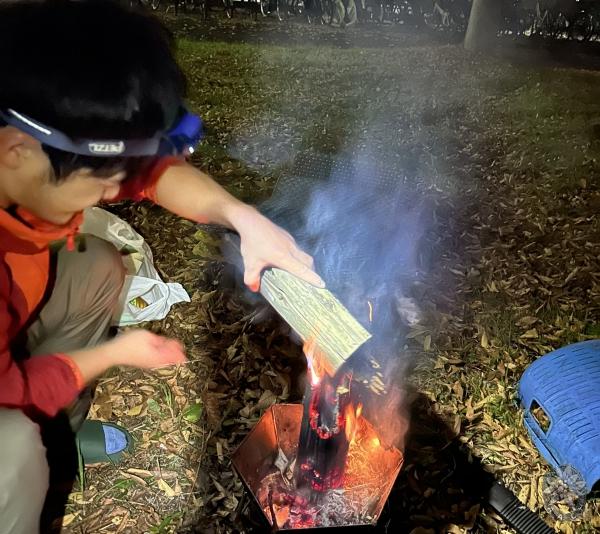
|
|
2024-12-12 23:51
|
山岳館

|
蔵書目録
|
|
2024-11-29 14:49
|
山岳館

|
100周年記念事業準備委員会報告(2023)
|
|
2024-11-29 9:40
|
山岳館

|
100周年記念事業実行委員会報告 (2024)
|
|
2024-11-24 12:32
|
山岳館

|
絵画
|
|
2024-11-19 9:08
|
投稿記事

|
関西支部活動再開、202...

関西支部では2019年以来、実に5年ぶりに琵琶湖周辺で月見の会を開催しました。  当初6名参加の予定でしたが、残念ながら神戸さんと田中さんが相次いで都合が悪くなり、4名での小じんまりした集いとなりました。しかし支部活動が再開できたことは大きく、以前と同様たき火を囲んでの雑談は何よりうれしいことでした。 今回の開催場所は琵琶湖の南ではどこからでも簡単に識別できる近江富士(三上山)の、その西面にある花緑公園。泊まったロッジは4人用(2段ベッド)で、空調、トイレ、シャワー付き、鍋や食器、wi-fiも完備。ロッジに付属して外には開放テントの覆い付きでバーベキュー用の炉があり、”たき火”もできて我々にとっては精神衛生上も落ち着きます。そこでコップ片手に肉や野菜を炙りながら時にしんみり、時に辛辣また破顔、延々と会が続き、喋り疲れ気が付けば午後10時過ぎ。杉木立の森の中、11月にしては風も柔な月見の会でした。
|
|
2024-11-3 13:49
|
記事

|
山の会会報
|
|
2024-6-3 23:15
|
山岳館

|
第16回 「私の登山に影響を与えた人たち」
|
|
2024-3-7 11:20
|
投稿記事

|
酔いどれクライマー永...

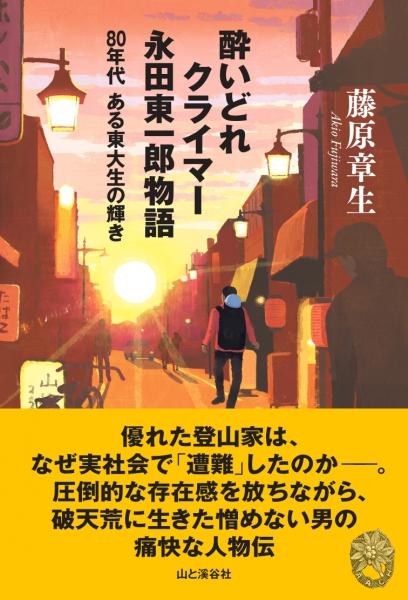 東大スキー山岳部が1984年に初登したk7の快挙は、私が同じ年に北大の山岳部に入部したから、なんとなく知っていた。でも、北大はこんな垂直岩壁の鋭鋒を登るようなセンスでは無く、ひたすら寒冷山地の長期山行を志すようなクラブだったので、あまり関心も無かったと思う。そのとき5年目のセンパイだった藤原章生さんが、K7を率いた永田東一郎氏が上野高校山岳部でのセンパイだったと知ったのは今回の評伝でだった。私の3年(部では4年)上が藤原さん、その3年上が永田さんという世代関係だ。 この本は凄い登山家の物語では無く、80年代の今から思えば自由な教育を受けた世代が生み出したハチャメチャな快挙と、魅力ある才にあふれた人物がいかに周りの人たちを吸引し、渦を作って行くのか、そして才あふれる永田氏が社会ではいかに遭難してしまったかを丹念に追った物語だ。たくさんの関係者のインタビューが登場し、著者によれば「群像劇」となっている。 著者自身の生い立ちも永田氏との関連で語られる。親の世代の持つもの、東京都東部の丘の上と下の町、目上の人に対する遠慮ない話しぶりなど。自由な校風の高校だった私にも覚えがある。でも未だにそれはやめられない。「十代から二十代にかけての成長期、人は変わる。というより、集団に染まる。」永田さんが上野高校山岳部と東大スキー山岳部で人格を作って行った過程をたくさんの資料から丹念に追っていく。ドウドウセン遡行、利尻のボブスレー滑落、滝谷の転落など、強運もある。 K7のあと、きっぱりと山をやめた永田さんを、和田城志氏が、「本当の山を知らずに終わったのではなかろうか?」と評している。山を競技の場、発表の場、スポーツの場として活動する傾向があるほど、長続きはしないと私も思う。北大には無縁だった重荷のシゴキやパワハラ関係が、今は凋落した大学山岳部の強い印象を残している。人目の多い本州の山だからこそ、屈折したシゴキが生まれたのでは無いだろうか?東大にはシゴキは無かったようだが、「他者との対抗」は、山では続かない動機だと思う。誰とも競わないことを憶えたとき、山は自分のものになる。 読んだ直後に著者藤原氏と一週間のイグルー山スキー山行に行き、酒も飲まずにこの本の話をたくさんした。本人設計の建物まで出かけ、フラれた女性にまで話をきく。人の評伝を書くことの果てしなさと面白さを思った。何よりこれだけの本を書かせるだけの魅力に永田さんがあふれていて、その様が本人を知らない私にも生き生きと感じられる。 評伝はおもしろい。丹念に山行記録をたどると、人生で初めての山と、最後の山がすぐ隣同士で日付も同じだったことを発見した驚きなど。著者以外は本人しか知らない心の中を知った喜びだ。これだけの評伝を書き終えれば、本人が親しかった人たちのための、とりわけ家族のための墓標になると思う。そして、すべての読者に問いかける。この限りある人生で、あなたは何をしたいのかと。 酔いどれクライマー永田東一郎物語 80年代ある東大生の輝き 藤原章生 2023.3 山と渓谷社
|
|
2024-2-25 16:37
|
投稿記事

|
2024年2月土曜日の午後...

ここ数年関西支部は冬眠中で、時々有志が互いの近況報告がてら3−5人で集まり京都駅前のビアレストランで一杯飲んでいましたが、今回は少し目を覚ましカシを変えて名古屋駅近の中華料理店に9人が集合し「遥か昔を語る」と題しひと時を過ごしました。
当日は遠方から参加予定の方がJR北陸線が不通になり参加不可となったり、地元在住なのに市内のど真ん中、名古屋駅前で迷子になって集合に遅れたりのいつものハプニングがありました。そんな皆様に昔語りのお題を出したのは失敗で、60年も昔の記憶など今や事実だったのかも定かではない。
|
|
2024-1-21 14:56
|
山岳館

|
第15回「厳冬期 日高山脈直登沢を登る」
|
|
2024-1-8 15:48
|
投稿記事

|
【読書備忘】雪崩の掟...

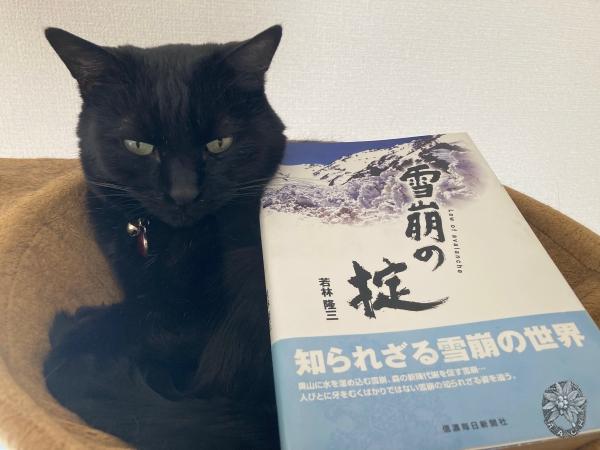 1990年代に、バックカントリーという言葉が流行り始め、スキーエリア外遭難が増え、雪山登山者に加えてエリア外滑走愛好家に雪崩レスキューや弱層テスト講習などが盛んになった頃、新田(若林)さんに札幌で、信州で、何度もおあいした。1995年1月の千畳敷での雪崩遭難事故の際にも、いち早く現場に駆けつけていてお会いしたのを憶えている。その後、信州大の演習林での研究ぶりを学生たちから聞いていた。ゆっくりと穏やかに話をされる方だった。 松本の古書店で見つけた。1940年生まれ、2022年末亡くなった、新田改め若林隆三氏の2007年の刊。氏は北大山スキー部OBの雪崩研究者。50年近く雪崩研究の最前線に居続けた。雪崩とどう付き合うか?は登山愛好家にとって果てしのないテーマだ。 登山実践経験者が多い雪氷学界の中でも、極めて登山実践者的立場だったと思われる氏の、生涯通じた雪崩研究人生の総まとめ的な一冊に思える。親しみやすい文体で数々の雪崩事例を読ませる。長期間の研究人生を踏まえてはいながら、内容の殆どは2007年直前の大きな事例が解説されている。 ▼富士山スラッシュ雪崩の「新発見」は、以前から伝えられていた富士山の「雪代」の実態を世に知らせた。デブリの融雪が早く、すぐに観察しなければその惨状の実態がよく伝わらなかった特殊なシャビシャビの雪崩のメカニズムについて。北大山岳部OBの安間荘氏らとの研究についてまとめられている。 ▼重度の低体温症遭難者のレスキューでは要注意の「再加温ショック」について。2006年の救出時仮死状態から適切なケアを施されて4時間後に蘇生した手当の最先端の話。山スキー部OB船木上総氏の「凍る体(2002)」など、手足のマッサージなどは厳禁、という常識はこの頃からだったように思う。 ▼2000年の大日岳雪庇崩落事故事例には雪庇断面の空隙やすべり面などの研究などを紹介、当地での現場検証も行った。「32mの雪庇」って意味が分からなかったけど、この解説を読んで了解した。氏は毎度、講習で雪庇断面を切って雪の層を着色し、自ら乗って雪庇崩しのデモを行っていた。 ▼2006年岳沢雪崩についても詳述あり。雪崩に見舞われる他の山小屋の事例も多数。小屋が雪に埋まっていない、稜線には大雪が降った12月に小屋が全壊するような件が多いとのこと。 ▼終章は栂池の雪崩が育む森林の新陳代謝の話。老木巨木は日を塞ぎ、若い木や下草が生えず、雪崩がこれを一掃してくれると。新田(若林)さんは、雪崩は美しいと折りに触れ話していた。 雪崩、低体温症、雪庇などに関しここ数十年でゆっくり認知されてきた意外な事実の、同時代的で先進的な視点がよくまとまっている。この本の終章でも、雪崩は不吉なだけのものではなく、希望や未来へつながる山の呼吸のひとつなのだと。人の都合だけで見るものではないのだと語っている。 亡くなったと知ってから読み返す著書は格別です。生き返って話を聞いているかのよう。
|
|
2023-12-19 21:25
|
投稿記事

|
【読書備忘】ロバのス...

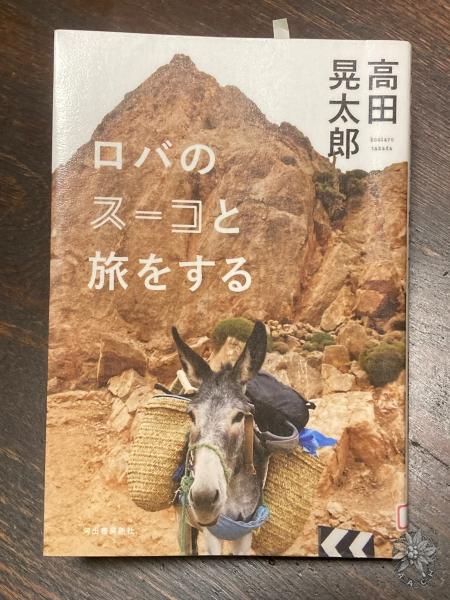 筆者は旅に魅入られた人。ヒッチハイク好きの北大生だったのも実にわかる。そして徒歩旅行、自転車旅行の延長に、ロバとの旅を思いつき実践する。イラン800km、トルコ1200km、モロッコ1500km。探検的使命や記録狙いでもない、目的地さえ無い。ただロバとの長期徒歩旅行を実践したかった。 私は以前満洲北部で初めてロバを見た。大きな耳、いつも何か食べている。目の周りの白い縁取りデザインがパンダみたいにどこかとぼけている。何故か日本には全く居ないし寓話の中でしか出てこないけれど、ロバは前々から非常に気になる存在で、徒歩旅行をするのに良い相手だと思っていた。以前、日本縦断徒歩旅行の友人が、うちに寄って数日食客をして旅立っていった際も、手記にロバのスピードについて書いていたのも印象的だった。本当にそんな寓話のような人が現在いて驚いた。 筆者のロバ愛文がよくて、そこがこの本最大の見せ場かも知れない。無心に草を食む表情、耳や目や、動き一つも描写し、ロバを見ているのが本当に好きなのが分かる。交尾未遂に終わったロバが未練がましく泣き叫ぶ姿の清々しさに感銘を受けるところも好きだ。しまいには糞の形状の芸術性まで書き込む。 イランやトルコの警察は鬱陶しい。アル中やヘンタイや憲兵もいる。やはり自由な人間はどこでも公権力に妬まれてしまうのだ。トルコも20年前くらいからロバはいなくなったと。やはり内燃機関が安上がりで、インフラができれば世は車に替わる。モロッコで今もロバが居るのはインフラが無いからだ。アトラス山脈の旧知の古老を訪ねる話が印象深い。 著者の「歩いていけばどこにでも行けるという実感」、登山愛好家の私は共感する。なぜ山登りや旅が好きかと言えば、百年前の車の無い時代のように体を使い、生きていることを実感するのが好きだからなのだ。 生きていることを実感する旅に、人間以外の相棒としてロバはぴったりだ。人の最高の教養の一つは、人以外の生きものとの意思疎通ではないだろうか。近代が捨てた大きな教養の一つだと思う。バックパックではなくロバと。ただの荷物持ちではなく盟友として。とても新鮮で清々しい。 以前北海道にいたとき、乗馬で弓を射る流鏑馬を少しかじったことがある。南米パタゴニアでは、馬の背に乗ってまる二日間、荒野を旅したことがある。馬に認められるまで付き合うしか無い。認めてくれれば、勝手に働いてくれる。 この百年、あれだけ地上に栄えた馬は一気に数を減らした。長くかけて築いた人馬共同の文化も技術も風前の灯火だ。数年前、信州で馬に犂を引かせて稲作する馬耕や木材を運ぶ馬搬を実践する数少ない継承者にあった。青森にいたときは背丈よりも積もる雪を除雪車で大がかりにどけるクルマ社会ではなく、馬橇と山スキーで暮らすような「馬文化実践特区」を作って、世界中の馬好きを集める地域の可能性を夢見た。馬よりも扱いやすいというロバなら、可能性が広がる気がする。ロバを沢山の人が連れて歩く日本。そんなすてきな未来を夢想している。 国境を越えるとき、いつもロバと別れる、別れのシーンも好きだ。ヒッチハイクと同じく、お礼を言ってさっと別れる。別れることに不器用になった時代だという気づきも印象的だった。私もこんな旅をする山登りをしたい。
|
|
2023-12-7 0:17
|
投稿記事

|
第96回ヘルヴェチア祭...

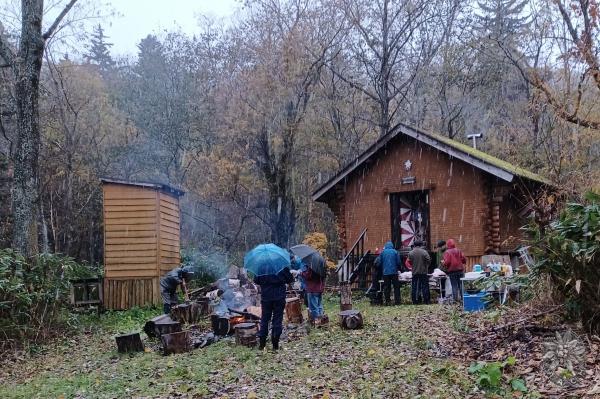 10/21の前夜祭では焚火を囲みながら現役の自慢の料理を頂き、Y三さんが山の歌をいくつか用意してくれて歌唱指導。久しぶりに現役とたくさん歌を歌った。暗くなってかなりの降雪があった。次期ヴェチア委員長の勝亦君が引き継ぎの弁をしっかり語り、私の肩の荷もおろせた。  朝食。なかなか具の多いうどんメニュー。この変形している煙突は新品に交換。 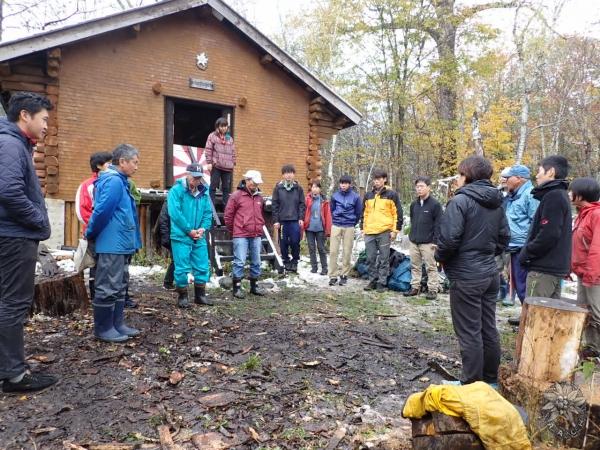 10/22当日は薪割り、ワックスがけ、煙突掃除、外壁塗布などやってから祭り。ヴェチアの由来披露、山の四季を歌った。 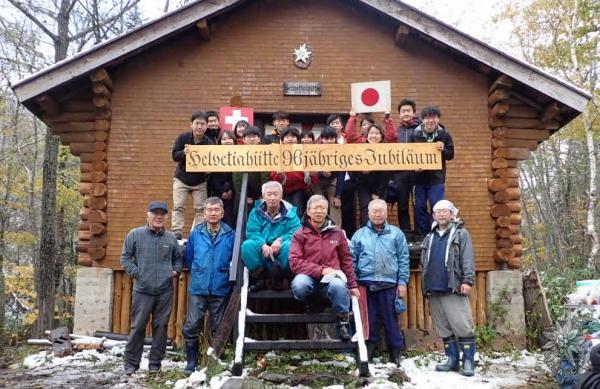 最後に記念写真。朝4時頃まで元気だった2年目が記念写真にも現れず。 女子も半分近くいて1年目は9人が入ったが今は5人か6人。全員で12名位。リーダースタッフが少ないので若手OBの参加が必須。
|
|
2023-9-26 0:04
|
山岳館

|
第14回アフリカの現状と飢饉の克服
|
|
2023-5-13 13:59
|
投稿記事

|
【読書備忘】エスキモ...

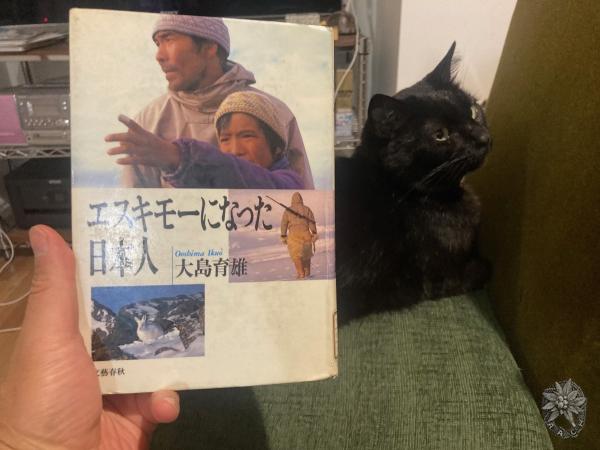 日大山岳部員の北極探検隊員として犬ぞり習得のためにグリンランド最北の村に一年住み込みに行ったら、その暮らしに魅力を感じて、そのままエスキモーになった男の半生を書いた自叙伝。1972年から猟師になって、1989年の本。現在も80歳近くで続けていると思われる。 内容が稀な話である以上に、とにかく文章が上手く面白く、最後まで引き込まれた。自分の経験だけを書いていてこの面白さ。山野井泰史の自伝にも通じる、やっていること、生きる姿勢の凄さ自体が文体をおもしろくする典型か。表紙やグラビア写真がやけにキマってると思ったら和泉雅子氏だった。 現地の娘と結婚までして、なぜまたそんな人生を選んだのか。 「その日暮らしではあるが、生活していく上で人に命令されることもなければ、命令することもない。いっさいが自分の責任において自由に生きられる。とてつもないスケールの自然の中で猟をして、自分の手でとったその獲物を主食とし、衣類とする。生活の機構が単純で、自分の働きがそのまま生活に直結する。良くも悪くも、完全に自分が人生の主人公だ。」(p61) 山登りなんかより面白くなってしまったのだ。 エスキモーのいる北極圏は日本で言えば樹林限界以上の風雪地帯、夏でも高山植物かコケくらいしか生えない。ソリや住居に使う材木はどれも流木だ。そこを住処にする理由は、厳しい環境でも人は工夫をすれば慣れてしまうということ、それから何をおいても「極上のごちそう」があるからだと、本を読んでわかった。おカネがない世界では、ごちそうが獲れることの意味がとても大きい。この環境は苦界では無く、欲とか隠しあいの煩わしさを持たない真の喜びを知る世界なのだ。彼はそれをいち早く見抜いたのだ。 猟の方法の詳述が具体的で面白い。アザラシのフリをして「だるまさんごっこ」みたいにして近づいたり、アザラシのフリを演じてみたり。地上で最高の「ごちそう」海獣たちはこの厳しい環境なら捕食者が来ないと進化したが、「地上で最高にススんでる」エスキモーが、あの手この手で捕まえる。 見かけは最悪、味は極上の、鳥の発酵食品キビヤ。食に対する人の偏見と順応性についても知る話が多い。エスキモーは「生肉を食べる人」というお隣の先住民(森林系)による差別的な意味が語源というが、実はほとんどは生ではなく半解凍の生、ルイベのような状態で、ナイフで削いで口に運ぶらしい。なるほどと思う。ちなみに別の本で読んだけど18世紀にフォークができる前は欧州の王様でも右手にナイフ、左手は素手で肉塊を切って口に運んで食事していたそうだ。つい最近のこと。 海獣やトナカイのバラし方、分配法、各臓器の効能についても詳しく、おもしろい。シロクマの肝臓はビタミンAが豊富すぎて食べると具合が悪くなる話(p153)、とれたての海獣の胃袋には食べたてのおいしい海産物がたくさん入っていてこれも余禄になる話、更に村の古老が話す伝説やおとぎ話、不思議な霊的な話なども。伝聞や翻訳ではなくエスキモーの暮らしを日本語で直に読める最良の書だと思う。 大島氏が最初に最北の村シオラパルクに着いた日、数ヶ月前からやはり犬ゾリ習得のために住み込んでいた植村直己との交流があり、その人柄も書かれていて面白い。エスキモーたちはこの二人を歓迎してくれて嫁さんまで世話してくれた。結婚式の正装に、新品のシロクマのズボンとブーツ(カミック)っていうのがすごくいい。 イグルーに関しての記述は少しだけ。この地域ではイッドゥギアというらしい。冬の旅の猟のベースキャンプでつくるが「極北ではそれを造るのに適した雪はなかなか無いものだ」とのこと。やはり雪の質が鍵になる。「今でも冬の間に定着キャンプを定めてそこから猟に出かけるような場合、イッドゥギアを作ることもある。慣れた人はものの1時間で作り上げてしまう。マイナス三十度四十度でも、中で石油コンロひとつつけていれば充分暖かいのである」(p199) 猟とは人にとってなんだろうと考える。「私は猟が好きで漁師になった。ガイドをして歩くより好きな猟をしていたい。お金がなければ物質的な生活レベルを落とせばよい。」(p221)自分の人生の舵取りを自分で握り続けた満足感を感じる。 いま2023年、大島さんは、シオラパルクのエスキモーたちは、好きな猟を続けることができているのだろうか。温暖化と環境汚染の影響は極地地方に押し寄せる。 エスキモーになった日本人 大島育雄 1989 文藝春秋社
|
|
2023-4-26 22:39
|
投稿記事

|
【読書備忘】What'...

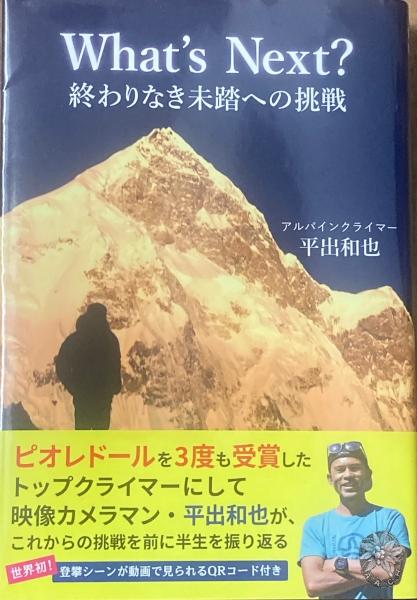 1979年生まれの平出和也、2000年ころから名前を聞くようになったけれど、この本を読んで、その軌跡と考えがよくわかった。 競技者として体を作り込んだあと、山を知る。競技にない自由が山登りにはある。ヒマラヤの高山を求めて大学山岳部の登山隊に入る。誰にも登られないルートを求めて、カラコルムに山を見に行く。次々と脱皮していく。地形図や写真を研究して、美しい山の宝のルートを掘り当て、「夢のファイル」を貯めていく。パートナーと出会い、別れて、続けてきた。 幸運もあったけれど、美しいルートを見つけて自分の力との兼ね合いでギリギリ登ってくるセンスが彼には有るのだと思う。登る山がどれも美しく、憧れるような名峰ばかりだ。シブリン、ライラ、カメット、スパンティーク、ナムナニ、シスパーレ、ラカポシ・・・。ピオレドール三回も納得の軌跡だ。カッコいい山ばかりの未踏のルートばかりを。本の構成もうまく、ルート図入の写真もよく、山行記録集としても満腹の本。 アマダブラムの救助ヘリ墜落は痛恨だと思う。こんなつらい経験もしていたのか。 この本は先日、札幌で「山岳TV取材の30年」という演題で、私が講演をした際に、寺沢玲子さんに「ハイ、これ」と手渡されたもの。ちょうど買って読まなきゃと思っていたところだった。なんでレイコさんが平出さんのサイン本を?と思ったのだけど、読んでわかった。平出さんの初パキスタンの船出のときからのご縁だったのだ。若い人たちとの熱気あふれる懇親会で、レイコさんとあまり話せず残念だった。 私は1990年からTVカメラマンで、山岳部経験のおかげで8000m峰を含むヒマラヤ高峰登山取材に何度も携わった。カメラ8kg三脚8kg+酸素タンク8kgを担いでガッシャブルムIIの山頂にも立った。平出さんの15年前の私の世代はTVカメラが重く、小さなカメラの画質は悪かったので、あまり使えなかった時代だ。漬物石並みに重い電池の消耗も早く、単行本サイズのビデオテープも大きかった。この時代、高画質高額の撮影機材はTV局の独占物で、従って映像取材の機会も独占物だった。だから、山岳部出身の私程度の経験のカメラマンが行ける「冒険」の取材はできた。 よく言われるように「TVの登山シーンでは映っている人よりカメラマンのほうが一番大変でしょ」というのは本当だ。自分より登れる相手、自分のレベルからかけ離れたルートの取材番組はできない。私も、山野井泰史のホンキのクライミングを撮れるとは思えなかった。 小型カメラが高性能化し、電池と記録媒体の小型化、高性能化と価格低下が21世紀になり劇的に進んだ。2010年代には私自身もよく取材に使うようになった。猛吹雪で撮るものが無ければ自撮りもして、現場の状況も心象さえも伝えられる。 そして、これによって、山岳映像取材はTV局の独占を離れ、クライマー自らが撮ることができるようになった。平出さんはまさにその時代に現れたエクストリーム山岳カメラマンとなった。トレラン登山取材さえこなす体力も他者の追随を許さない。 ドローンが「夢の映像」を実現するようになってから、実は私自身はあまり山岳番組を見なくなった。低空俯瞰映像は完璧すぎてお手上げで、私の手を離れたな、と感じたせいだと思う。でも講演の前に「シスパーレ」の番組録画をようやく見た。クライマー自身が撮るしかないヤバい雪壁のクライミング。先のことは全く読めない山行ならではの筋書き不明の展開、と、見るものに迫る作品だった。このレベルのクライミングは、彼らにしか撮れない。そう思った。そして、私は一体これまで、何を撮りたかったのだろうか?と今も考えている。 自由について、パートナーについて、失敗について、未知について、準備について、「メモ帳から」とあるページの言葉が、すごく良かった。 人生の最高点は、山と違ってその時はわからないかもしれない、と今は思う。下り始めてから「あれ、おれ今もしかして下ってる?」とわかるのが山と違うところ。下りが難しくて危険が多く事故が多いのは、山と似ているかも。と、友人に言ったら、下ると危ないから、人生では下っちゃダメだね!と言われて、目からウロコだった。全くそのとおり。 平出さんには、この先K2未踏の西壁がある。
|
|
2023-4-11 21:13
|
投稿記事

|
【読書備忘】天災か人...

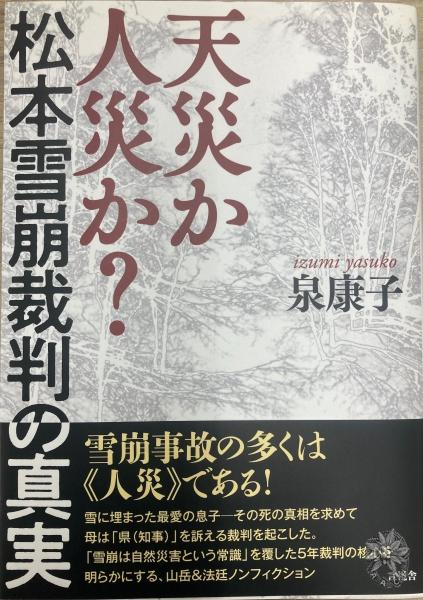 30年以上前の雪崩事故裁判について、この3月、その一部始終をまとめたノンフィクションが出版された。私の登山人生の初期の頃と時代も人々もとてもかぶっている事件だったのに、この本を読むまでその裁判の詳細を知らなかった。そのことが読後感として大きなショックだ。登場人物のほとんどの人を知っていて、そのとき札幌から長野市にも転勤で住んでいて、報道にも携わっており、山にも登り込んでいたのに。 著者は泉康子氏、やはりそのころ「いまだ下山せず!」という自らの山岳会の遭難のノンフィクション作品で読んだ覚えがある。取材は判決後十数年経ってから、出版は更に十数年経ってからという。なぜ今?とも思うが、私にとっては大きな意味があった。今回、当事者の高校教諭そして同級生の、西牧岳哉氏から送ってもらった。 1989年3月、北アルプス遠見尾根のスキー場トップ近くの雪山登山講習会で雪山初心者の高校教諭酒井耕氏が亡くなる雪崩死亡事故があった。講習は長野県教育委員会主催で初心者の高校山岳部顧問と生徒が対象だった。「雪崩は天災」とする県に対し「 雪崩は予見できた人災」で、県はその過失責任を認めるよう1990年に犠牲者母の酒井三重氏が訴訟を起こした。5年間の裁判の末1995年11月原告側が勝訴。山のベテランの認識不足と準備不足を登山の素人の原告側が雪崩の学習をして論破していく経緯が書かれている。非常に画期的な判決だった。 県や組織の対応はお決まりで、訴訟しなければ泣き寝入りするしかない、これは今も同じだ。だがそういう話に加えて、当時の登山界のベテランたちでも、雪崩の最新の誘因などの知識に無知で、経験と勘だけに頼っていた。死亡事故は運が悪く、山での事故は共同責任であり、訴えるなんてとんでもないという時代だったことを思い出す。法廷で「経験者としてできることはやった」「そんなことを言ったら山なんか一歩も登れなくなる」という被告側の発言は、当時の私と大して変わらないし、今でも私の中にあるのではないか? 当時1980年代終わりくらいから雪崩は科学的な知識で見なければならないという新田隆三氏、中山建生氏の雪崩講習会を私自身取材した。北大の阿部幹雄、樋口和生、福沢卓也もそれ以前からの山仲間であり札幌で何度か講習会を取材した。雪崩学が急速に登山者の間に広がりはじめた境の時代だった。それほど雪崩事故防止の取り組みに関わっていたのに、なぜ私はこの裁判にあまり関わらなかったのだろう。 それは今から思うと、係争ごとに抵抗を感じ「山の素人たちに、安全管理のためとして、自由な山登り、リスクを受け入れた魅力ある山登りを制限されてしまうのでは無いか」と心のどこかで警戒していたのではないだろうか。もちろん、自主的な登山と、講習会での新人の安全確保とでは話は全く違うのだが。その点を今ほど区別して考えていなかったと思う。つまり当時の感覚として私は、雪崩の誘因に関しては最新知識を持っていたのに、責任論に関しては被告側と大差なかったのだと思う。今になってこの読書をしてそれを思い出し、恥ずべき過去の感覚を思い起こす。 亡くなった酒井耕さんも、ずっと裁判を支えてきた西牧さんも、私とは高校で同学年の仲だった。物静かで粘り強い彼は、ずっと母の酒井三重さんの訴訟を支えた。10代20代を通じた親友を失った西牧さんや、女手ひとつで育てた息子を理不尽に失った母親の気持ちなど、以前の私には正直わからなかった。私も山で多くの友人を亡くしていたけれど、それはいわば同志の死への思いであり、一緒にしてはいけない感覚なのだ。私は死んだ友人たちの両親に、不用意なことを口にしたりしなかっただろうか。今になってそんなことを思い出す。 西牧さんは今、我々のいた松本深志高校の山岳部顧問をしていて、毎年3月18日前後に、その雪崩現場前で現役高校生たちにその話を語り続けている。私は何年か前から西牧さんの講習会に、イグルー講師として参加している。今年は私の娘が山岳部員となって参加した。そんなふうに、自分の子供が大きくなってみて初めて、酒井三重さんの苦しんだ気持ちを想像することがようやくできるようになったと言っていい。 ずいぶん長いこと鈍感だったことを、気づかせる読書だった。 判決のあった1995年は阪神淡路の震災と地下鉄サリンの年だ。世の中のリスク管理や組織の安全管理責任意識などは、この頃から変わっていったと思う。山や冒険の危機管理は、私が密かに「恐れていた」社会になったのだろうか。わからない。だが一方でその後も危機管理されるべき初心者講習の事故は続いた。2000年大日岳雪庇崩落事故、2017年那須の雪崩事故。 裁判も傍聴していない、当時の取材も随分後からというのに臨場感あふれる裁判シーンなどノンフィクションの書き手としての力がすごい。三重氏や中島弁護士の若い頃からの育ちが詳しく書かれ、遠回りのようで意外にも重要だった。なぜこのような裁判を続けることができたのかという点に納得がいく。 新田隆三先生も亡くなってしまったけれど、本が世に出てよかったと思う。 天才か人災か?松本雪崩裁判の真実 泉康子 言視舎 2023.3 明らかな間違いあり。 p152 宮本氏が「1992年ナムチャバルワの登攀隊長」は間違い。1996年チョモラーリでは p304 北大山岳部、登山部、山スキー部が混乱している。登山部は無い。確かにわかりにくいとは思う。
|
|
2021-3-22 4:03
|
コメント

|
Re: 【中部日高】ナナシ沢1823m峰南面直登沢→コイボクシュシビチャリ川
|
|
2020-7-17 8:05
|
記事

|
新人勧誘ポスター
|
|
2017-7-3 14:46
|
記事

|
北海道新聞に式典の記事が掲載されました(2017年7月3日)
|
|
2017-1-29 17:43
|
コメント

|
Re: これまでの部報紹介・3号(1931)上/(米山悟1984年入部)
|
|
2016-12-17 19:42
|
コメント

|
Re: ペテガリ冬季初登・72年前の今村さんのゲートル 米山悟(1984年入部)
|
|
2016-9-9 22:58
|
記事

|
空沼小屋改装仕上げ作業のご案内(2016年10月1~3日)
|
|
2016-7-28 22:47
|
コメント

|
Re: 暮しの手帖96 特集戦争中の暮しの記録 1968 うちにありました
|
|
2016-7-4 13:41
|
コメント

|
Re: 医学部戦没同窓生追悼式のご案内
|
|
2016-6-17 9:54
|
コメント

|
Re: 道新に今村昌耕会員の記事
|
|
2016-6-12 11:16
|
記事

|
空沼小屋修復工事いよいよ開始(2016/6/12)
|
|
2016-2-26 19:14
|
記事

|
北大・空沼小屋 修復保存工事決定と募金のお知らせ(2016年2月掲載)
|
|
2015-12-22 23:49
|
コメント

|
Re: おくやみ・谷口けい 米山悟(1984年入部)やま
|
|
2015-7-17 18:54
|
海外遠征

|
序
|
|
2014-12-9 9:53
|
コメント

|
Re: 【書評】アルピニズムと死 山野井泰史 2014.11(米山悟1984年入部)
|
|
2014-10-26 21:04
|
コメント

|
日高山脈の地名問題
|
|
2014-10-25 6:17
|
コメント

|
Re: 【読書感想】七帝柔道記 米山悟(1984年入部)
|
|
2014-5-17 19:51
|
スケジュール

|
山岳館開館日
|
|
2012-6-21 12:49
|
海外遠征

|
パミール・レーニン峰(7134m)登頂
|
|
2012-5-24 9:42
|
記事

|
ダウラギリとその時代
|
|
2011-12-8 22:40
|
記事

|
リンク
|
|
2011-6-30 17:09
|
海外遠征

|
北大ネパールヒマラヤ学術調査隊1969
|
|
2011-6-30 16:34
|
海外遠征

|
スダルシャン・パルバート
|
|
2011-6-30 16:33
|
海外遠征

|
81-82年パタゴニア
|
|
2011-6-30 12:47
|
海外遠征

|
海外遠征の記録
|
|
2011-6-30 12:29
|
海外遠征

|
96ロルワリン・タンナ・リ峰遠征
|
|
2011-6-30 12:26
|
海外遠征

|
ヒムルンヒマール(7126m)初登頂
|
|
2011-6-30 12:25
|
海外遠征

|
82ダウラギリI(8167m)厳冬期初登頂
|
|
2011-6-30 12:24
|
海外遠征

|
68北大中央ネパール生物調査隊
|
|
2010-5-25 22:06
|
記事

|
空沼小屋(旧秩父宮ヒュッテ)の価値について
|
 メニュー
メニュー